
- TIPS & TRICKS
- TRAVEL RESOURCES
- PACKING LIST
- READING LIST
- PHOTOGRAPHY TIPS
- Search for...

How to organise a 3-day Pampa tour in Rurrenabaque
- June 9, 2024
- 21 min read
As large as 7 million square kilometres, the Amazon covers 60% of the Brazilian territory but also the countries of Venezuela, Suriname, Guyana, Bolivia, Ecuador , Peru and Colombia. The Amazon forest is a dream we share with a lot of travellers in the hope of encountering a large wildlife diversity and living a unique travel experience.
In Bolivia , and more precisely, near the little town of Rurrenabaque , we hopped on a 3-day tour, looking for anacondas, pink dolphins and piranhas .
Here is a detailed guide on how to organise a Pampa tour in Rurrenabaque, filled with our best tips and advice for a successful tour in the Bolivian Amazon.
- Why going on an Amazon Tour from Rurrenabaque?
- Choose your tour: Pampa or Jungle
- The Amazonian wildlife
- Anaconda quest and piranha fishing
- Swimming with the pink dolphins
- Getting to Rurrenabaque, flying or busing?
Where to stay in Rurrenabaque?
- Booking a tour: La Paz or Rurrenabaque
- Our tips for a successful Pampa tour in Rurrenabaque
- Cost and useful information
WHY GOING ON AN AMAZON TOUR FROM RURRENABAQUE
The adventure into the Amazon starts with a 40 min flight from La Paz, taking us from 4,100 to 800 masl… Goodbye woozy altitudes and cold climate, Hello humid and heavy breeze! From the dryness of the highlands to the luxuriant Amazon basin, it is a drastic change we gladly welcome after a few months in high and chilly altitudes.
From the plane, after passing close to the mountain Illimani culminating at 6,438 masl, the lowlands of the Amazon quickly appear under the shape of a windy river making its way through dark green forests. As we disembark our medium-sized plane, our breath is immediately taken away by the moisture of the air and the beautiful landscape that surrounds us.
Rurrenabaque will be our first stop for less than 24 h, just enough time to find an tour agency that will take us on a 3-day tour the next day. The most common tours that can be taken from Rurrenabaque are either the Jungle tour or the Pampa (we explain the difference at the beginning of this article).
If the above didn’t already convinced you to visit the Amazon in Bolivia, here are 6 more reasons!

- It’s one of the cheapest places to visit the Amazon
- Wildlife is thriving
- You will fish and eat Piranhas
- It’s a lot warmer than in La Paz!
- Swimming with pink dolphins is a once-in-a-lifetime experience
- It’s only a 40 min flight from La Paz
Choose your tour | pampa or jungle
The town of Rurrenabaque itself is nothing much different from other towns in Bolivia (except Sucre maybe). The houses made of red brick are still unfinished and unpainted. The electric wires hang all around the place and the roads are still uneven. Maybe the biggest change would be the lack of “Cholita” since the population isn’t Aymara or Quechua, but Tacana, a native Amazonian ethnicity .
From Rurrenabaque, there are two types of tours that can be taken: the Pampa and the Jungle tour . While the first one is oriented toward wildlife sightseeing, the second focus on the native culture. If unsure of which one to take, a combination of the two can be arranged for a week-long in the Amazon.
The Jungle Tour
By leaving straight away Rurrenabaque by boat along the Beni River, the tour takes the visitor to the Madidi national park . The 2 nights will be spent in hammocks, right in the middle of the Jungle, or luxurious eco-camp, depending on the tour you choose and how much you are willing to pay.
The aim of the Jungle tour is to learn about the Amazonian rainforest, the people and their culture. Day walks will give the opportunity to learn about local culture as well as plants and their medicinal use, while only night strolls will target nocturnal wildlife.
The Pampa Tour
The tour starts and finishes with a 4-hour drive onto a bumpy gravel road. Once the little village of Santa Rosa is reached, the visitors hop on a boat that will take them to their eco-lodge and throughout the following days, to all the activities.
The aim of the Pampa tour is to see as many wildlife as possible , which in fairness won’t be that hard. Expectations are therefore to spot squirrel monkey, capybara, macaw, caiman, crocodile, and anaconda. The guide will also take the group to swim with pink dolphins and fish piranhas.

What to expect from a pampa tour in Rurrenabaqu
Amazonian wildlife.
After a great night at our hostel spend participating in a Pub Quiz, we met our fellow companions at the agency we had chosen: Fluvial tour agency . The 5 of us hopped on a 4WD and drove toward the wetlands of Santa Rosa.
Later on, after a brief stop halfway, and another one for lunch, we arrived by a river where we met many other backpackers on the way back from their pampa tour. As we switched our sits from the jeep vs theirs on the boat, they all smile at us, satisfied, striking at us how amazing their trip was.
Within 30 min all the boats left the bank of the river to go to their eco-lodge, except for ours. A 6th traveller whose flight from La Paz had been delayed was on his way and the guide decided to wait for him.
While we waited for about 3 hours, our guide brought us onto the boat to find wildlife. It only took a couple of minutes until we saw a few crocodiles and a capybara family putting mud onto their body. This rodent that looks like a giant rat, does this to protect itself from mosquitoes and sandflies’ bites.

The brown river shaded by giant trees is an eerily beautiful and peaceful place that we all try to take in as much as possible. As the tour continued we saw more birds such as bird of paradise . Not long after, big surprise for everyone… our first pink dolphins ! We were not expecting to see them this easily but according to our guide, in August, the river is low which helps to notice them. These dolphins are however very fast which make them hard to observe and photograph…
This river dolphins also called Boto , takes its name from the colour of its skin. This pink colour only appears with age as it is caused by a repeated abrasion of the skin. The younger ones tend to have a greyish tint.
Looking for crocodiles by night
As the day goes on, the 6th person joins us and the guide finally brings us to our Eco-Camp consisting of wooden sheds on stilts. That night, we hopped back onto the boat for a night cruise. With our torches, we looked for crocodiles and caimans which are more active at night.
If it wasn’t enough for our heart to only see the reflection of the light in their eyes coming in and out of the water, our guide started making deep throat noises which were quickly followed by a few loudest ones coming from the water. It was truly creepy and frightening to have this type of conversation with crocodiles!
One the way back, we all sat down in the dark, lights off, the boat guided by oar, watching the millions of stars above us and listening quietly to the nocturnal wildlife sounds. A pure moment of magic.
For more Bolivian wildlife, check our article about Santa Cruz de la Sierra

Anaconda quest
After a night of hide and seek with mosquitos, we woke up to the pampa’s noises. A lullaby sang by crickets, birds and monkeys. After breakfast we went back to the boat for a couple of minutes, just to cross the river and hop off at the start of the trail which led us to a swamp. On our first full day in the Pampa, we are looking for Anaconda !
Jenny, not really convinced by all this, had a small freak out when a crocodile made a very loud noise that sounded just like the roar of a Jaguar… Already nervous by the hunt for a snake, her biggest fear, she managed to stay strong and continued the walk in the wetland.
After 40 minutes of looking for an anaconda, our guide finally found one. An incredible sight that the 6 us couldn’t believe. All the other tourists had told no snake had been found for the past week… Our luck then! The guide immediately catches the Anaconda to show it to the group closely.
Note : we will not share any picture of the anaconda being held for the reason that we do not agree with wildlife being touched or caught in the wild for the only purpose of a souvenir picture. It is important to choose tours and guides that respect the wildlife. Unfortunately, it doesn’t seem that many tour agency share the word about responsible tourism and wildlife protection. It however doesn’t mean, as tourists, we cannot stand for our believes when the occasion arise. In fact, when our guide decided to bring the snake back to the camp to show it to the other groups, we asked him to not do such a thing and leave the poor anaconda go on with its day. A couple of people supported us and the guide agreed to free up the anaconda. Sadly, this type of situation is probably not uncommon.

Piranha fishing
In the afternoon, we all got ready to go piranha fishing with the idea to eat what we catch ! It was Steven’s first time and we had a lot of fun trying to catch the fish. It is actually quite hard as the piranhas only bite a little bit but never close enough to the hook. They have very small mouths and are very fast.
On the way back, we stopped at the “bar”, a place where tour groups hang out playing soccer or volleyball while waiting for the sun to hide behind the horizon. Now, that was a nice evening, but as you would expect, we ended up under the attack of a mosquito army which made the whole experience a bit less enjoyable.

Swimming with pink dolphins
On the paper that looks amazing. But when you think about it twice, it is quite scary. Remember what we did the past 2 days? Yes, watching crocodiles and caimans and fishing piranhas … Are you really expecting us to jump into this water?
Well, despite whatever people will tell you, the water you swim in is not by miracle only filled with pink dolphins … all the above are present and probably much more. The water is also so murky it is impossible to see through. Are we in a horror movie?!
“Don’t panic!” said the guide… “If the Dolphins are in the water, nothing else will take the risk to stick around”.
In fact, the pink dolphins are known for attacking crocodiles , and the piranhas will only start their meal if there is a wound or blood. Steven spent a while swimming around trying to get closer to the dolphins. They were two, very fast, moving around the place, but we never got the chance to approach them.
Jenny also jumped in the water and enjoyed a relaxing time, sitting on a boué. It is such an incredible experience to swim in an affluent of the Amazon river and watch crocodiles and caimans chilling on the bank of the river, mouth open, taking on the heat of the morning sun, only a few meters away from us… a bit scary but unique.

How to get to Rurrenabaque?
The main entry point to reach Rurrenabaque would be La Paz. There are two ways which are flying or taking the bus.
Flying to Rurrenabaque
At the time of our visit, Amaszonas ran about 6 daily flights for a cost of €165 minimum return. We bought a one-way ticket directly at the agency in La Paz as our credit card would not work on the website (which as of 2024 isn’t working). We bought the way-back ticket in Rurrenabaque once we knew our return date.
A military airline also runs flights once a day but at the time of our visit, their only plane to Rurrenabaque was being repaired. It is usually cheaper to fly with them. To know the timetable and book the flight, check out their website: TAM .
NEXT READ: What to do in La paz?
It is not rare for the flights from La Paz to be cancelled or delayed . We got lucky, but out of our 4 other companions on the Pampa tour, 3 had issues with their flights. They all chose to fly with the earliest flight (on two different days) to start their tour immediately after landing.
The australian couple got their flight cancelled and were rescheduled on the next one, they decided to stay an extra day in Rurrenabaque and start the tour the following day. The other one also had a delay issue. We had to wait for him for 3 hours on our first day. The 5th person with us, took the bus, and had no issues!
If you can, make sure to allow time and maybe like us, stay in Rurrenabaque before and after the tour. If you don’t have the time, but have booked your tour in advance from La Paz, the agencies will usually arrange something for you and take care of changing you return flight tickets if needed.

Taking the bus to Rurrenabaque
It is for sure the cheapest way to go to Rurrenabaque from La Paz (around 8€ one way with Turbus). It is also an interesting journey. A very bumpy one, on an unpaved windy one car size road…
Have you ever heard of the Death road ? Yes, the one that you can cycle and that is following 1,000 m cliffs high. Well, the tremendous project to build a road for vehicles to avoid the death road is still ongoing 20 years later. While a big part of the road has been paved and enlarged, there are still 3 passages that require the cars, trucks and buses to take the same old “death” road.
And this is only to Coroico/Caranavi… After that, the project has not even started and the unpaved road is still used by cars going both ways, the drop is still very impressive and not for the weak hearts.
Tips : We recommend to sit on the right side of the bus on the way to Rurrenabaque (and on the left to get back to La Paz). On the way down, the drop is on the left, and since this is the only road in Bolivia you are obliged to drive on the left (to be able to see the cliff and not drive into it…), it can be very scary to sit on the side of the escarpment. We have done this route twice to and from Caranavi in a 4WD, by night (the road is closed during the day for maintenance) and that was already really really frightening.
You can also bus from Santa Cruz de La Sierra . The trip is pretty much the same, bumpy, scary and long, but it can be a good way to visit Rurrenabaque without having to return to La Paz.
We stayed at the hostel El Curichal and we loved it!
We are pretty hard to please in terms of hostelling but at El Curichal the atmosphere is really good thanks to the owner. He is such a genuinely funny guy who is constantly entertaining with Quiz Nights and Rib BBQ ! The rooms were cosy and the showers cleaned.
The swimming pool is huge. They had a couple of kittens who hung out on the beds, so if you are allergic better finding somewhere else, but if like us you are fond of cats, it is a must go to cuddle!
Booking a Pampa tour in rurrenabaque
To visit the Pampa or the Jungle you may wonder if booking in advance is best. There are no miracle answers, it all depends on your situation and the time you have.
Organising everything yourself
If you decide to organise everything yourself, you will have to buy your flight tickets, book a tour directly in Rurrenabaque and look for accommodation once in town. This is what we did and it worked perfectly fine. We arrived in Rurrenabaque in the morning, found a great hostel, went around to find a good deal with agency, spent the night and left for the pampa the very next day.
This is probably the best way if you have time and are flexible. We also believe that prices are lower when we organise everything ourselves.
booking a tour from La Paz
If you book your flight last minute, there won’t a big difference in term of price between a self-organised tour and buying one from an agency in La Paz. All in all, with the flights and thankfully a negotiated tour rate, we ended up paying pretty much the same amount as a couple we met who booked their tour through an agency in La Paz a couple of days before.
We think the agencies in La Paz can afford such prices by buying the flights at the local rate (an Amaszonas agent confirmed that Bolivianos pay the flight tickets more than 50% cheaper than non-resident) and selling it to the tourists to the official rate which is around €165 return.
Note : If you book your flight ahead or decide to take the bus instead, you will save a good bit in transportation.
set Price & negotiation
Tour agencies in Rurrenabaque are supposed to sell Pampa or Jungle tours at the same price: 1200 Bs per person. This minimum set price has been defined by government law and it is illegal for an agency to offer a lower price.
Note: This law was established in December 2016 . So it is not new, and every agency knows it. Most of them actually display a sign from the government stating the law but there is no date.
The person at the desk told us they could give us a special price because we were lucky ; the law is only effective from “mañana”… understand tomorrow. Yes, very lucky indeed, but shh “don’t tell anyone” in your group… They say this to everyone, every single day.
We found out it was still pretty easy to negotiate with some tour operators, but the best price we were offered was a bit higher than expected,
>>> 850 Bs without the National Park entrance.
We couldn’t manage to get lower than this. Some agencies such as Max adventure which was strongly recommended to us refused any bargain. We went with Fluvial tour operator , the same agency our Australian friends booked with from La Paz. We had nothing to complain about.
What if your flight is cancelled or delayed ?
In case of flight cancellation or delay, the agencies are actually very flexible and will give you the choice on joining a tour the next day (what happened to the Australians) or will drive you all the way as soon as you land (what happened to the English guy we waited for 3 hours on our first day).
As it looks like, Amaszonas is also quite flexible and will change your return ticket easily if need be.

tips for a successful Pampa tour
- Leave your big backpack in La Paz, you won’t need all your stuff in the Amazon.
- The price for a private double bedroom is the same as for the dorm.
- There is no need to bring extra food , as you are well fed at the Eco-camp. If you do so anyway, do not leave the food in your bed but deep inside your bag, or the monkeys will find them and will eat them right in front of you as you will be taking hundreds of pictures of them. You will notice too late this is actually your food they are feasting on.
- Don’t forget a head torch . You will need it to come and go around the eco-camp and during the night boat tour. Don’t leave it unattended on your bed, it seems that monkeys also need light… ours was “stolen” at the same time as our cookies and bananas. They left Steven’s smartphone, though.
- Bring big socks (knee-high if possible) to wear with your wellies during the anaconda hunt in the wetland. Note that you will more than likely be wearing wellies with holes!
- Use insect repellent . If you only bring a hand-luggage and can’t bring more than 100 ml liquid bottle, you can find cheap insect repellent in Rurrenabaque. Look for “Off” in pharmacies.
- Book a nice place to stay on your way back. You will need an extra-hot shower and a very good bed upon your return. We chose the Wild Rover in La Paz for these reasons.
- Drink a lot of water on your way back, even before taking the plane. Going from 800 to 4100 masl in 40 min is not the most recommended journey and you will probably suffer mild headaches and dizziness. Drinking water will help decrease the symptoms and keep you hydrated.

Total cost of a pampa tour in Rurrenabaque
Total cost per person: €318 + food & snacks See details below
Flights La Paz – Rurrenabaque
- La Paz to Rurrenabaque – Bs 679 (€87) – online booking with Amaszonas
- Rurrenabaque to La Paz – 600 Bs (€77) – online booking with Amaszonas
Total flights: €165 per person
Accommodation in Rurrenabaque
- Hostel El Curichal: 45 Bs pp/pn (€5.75) – dorm
Total accommodation: €11.5 per person
Pampa Tour from Rurrenabaque
- Tour Fluvial: 850 Bs (€108) – negotiated
- Entrance Rurrenabaque National Park: 150 Bs (€19)
- Tip: €5 per day
Total tour: €142 per person

ARE YOU ON PINTEREST?
What about saving this post to your pinterest board click on the photo to save this blog post for later., we are also on the platform and we love pinning great travel tips. follow tales from the lens’ boards to see our latest pins., don’t be shy, come say hi.
Please note │ This blog post may also include affiliate links to hostels or products we recommend, which means if you buy something following a link on this page, we’ll get a small commission. This will be of no extra cost to you but will help us continue running this blog. Thank you for your support.
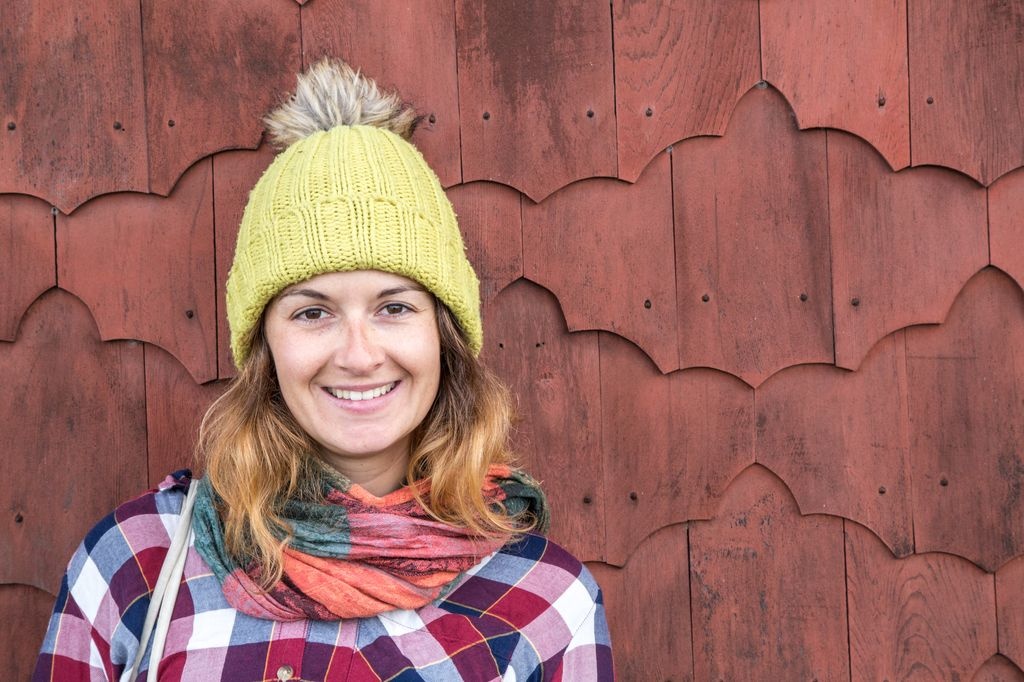
ABOUT THE AUTHOR
Jen – Owner, writer & photographer – has lived for the past 10 years across Oceania and Ireland while also travelling long-term in Latin America, North America and Europe. She has visited more than 60 countries and set foot on every continent in the world!
>> Favourite countries : New Zealand, Bolivia, Iceland. >> Wishlist : Svalbard, Japan, Botswana, Alaska. >> Philosophy : “We travel not to escape life, but for life not to escape us.
Jen is a coffee nerd, passionate about photography , wildlife and outdoor activities . Her organisation and curiosity make her a great travel companion always looking for DIY and off-the-grid adventures. For more info, check out the About page .
If you’ve found this travel guide useful and want to say Thank You, you can now buy me a virtual coffee!
Share this post!
This site uses Akismet to reduce spam. Learn how your comment data is processed .
This sounds like such an amazing tour, guys! Thank you for sharing this experience with the rest of us! I really enjoyed your way of describing it. Ugh, I’m not sure I would have liked getting into that water either 😉 Exactly! Let’s stand up for animal rights and a more responsible travel industry! I strongly believe that I would opt for the same response of leaving the poor animal. But yes, you are right, properly doesn’t happen that often. Thanks for sharing!
Thank you Becci. The water is at first scary, but once everybody is in, I am sure you would have jumped too!
Stumbled across your blog while reading up on South America travels, I thoroughly enjoyed reading several articles of yours and this one in particular. Will be heading to SA myself end of this year, solo, so I’m really nervous and excited for it. Will be taking up recommendations from your blog, so thank you! 🙂
Thank you Chelsea. You are going to have an amazing time time SA. And no worries, you will never be alone! If you go to hostels you will meet lots of solo travellers just like you. If you have any questions do not hesitate to contact us. We’ll be happy to help
TRAVEL SALE 🌎 Book now for up to 60% off!
Rurrenabaque Tours & Trips
5 rurrenabaque tour packages.
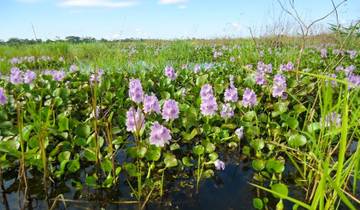
Bolivian Amazon Pampas Adventure 3D/2N (from Rurrenabaque)
- 10% deposit on some dates
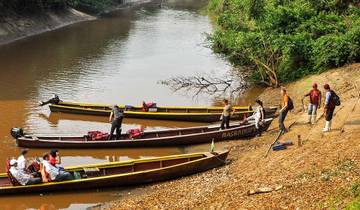
Bolivian Amazon Pampas Air-Expedition 5D/4N (from La Paz)

Bolivia: La Paz, Rurrenabaque & Madidi National Park - 5 days
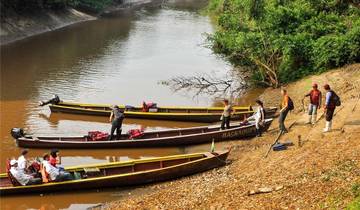
Madidi & Pampas Amazon Air-Expedition 5D/4N
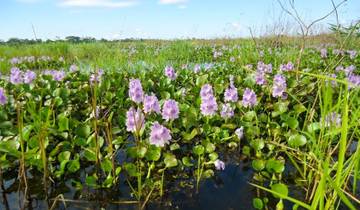
Bolivian Amazon Pampas Adventure 4D/3N (from Rurrenabaque)
Contact our rurrenabaque travel experts.
Expert in Rurrenabaque at TourRadar
Claire is one of our seasoned Rurrenabaque Travel Experts. Reach out to us to get all your questions about Rurrenabaque tours answered!
- Choose from 5+ Rurrenabaque tours
- 0 verified reviews by TourRadar customers
- 24/7 customer support
Write us a message
- to Latin America (2)
Discover TourRadar
- Sailing Holidays Australia
- Europe Tours
- Best 10 Day Portugal Itineraries (With Reviews)
- Australia Travel Guide | All You Need to Know
- West Highland Way
- Turkey Travel Guide | All You Need to Know
- Hiking in Europe in March
Rurrenabaque Tours
Pampas and jungle tours of the bolivian amazon.
Whether tourists wish to discover the ancient survival skills of the jungle, visit the astonishing wildlife of the pampas, explore daily life on a Bolivian ranch, challenge themselves on a jungle tour adventure, or simply relax by a swimming pool after a day of craft shopping in the tropical sunshine, we offer all the resources needed to plan a perfect trip to Rurrenabaque.
2019-08-20 Updated: 2019-08-23

Pampas Tour
3 Days, 2 Nights
Discover the natural wonders of the Madidi National Park, located in the Northwest region of La Paz department.
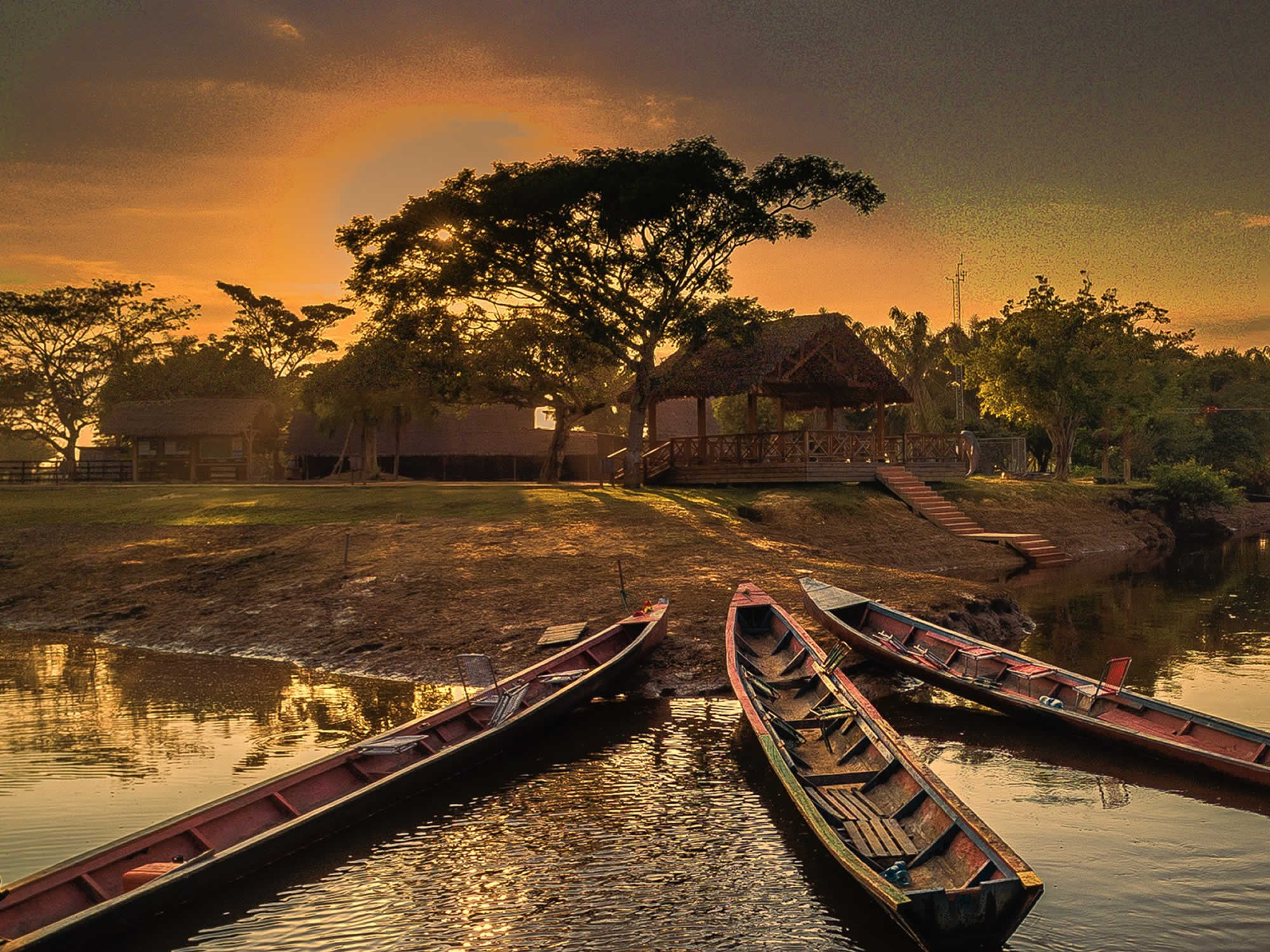
Jungle Tour
This 3 Day tour of the amazing Bolivian Amazon is a unique experience that will take you to the heart of the Madidi National Park. Learn the secrets of the rainforest and be amazed by its distinctive fauna!
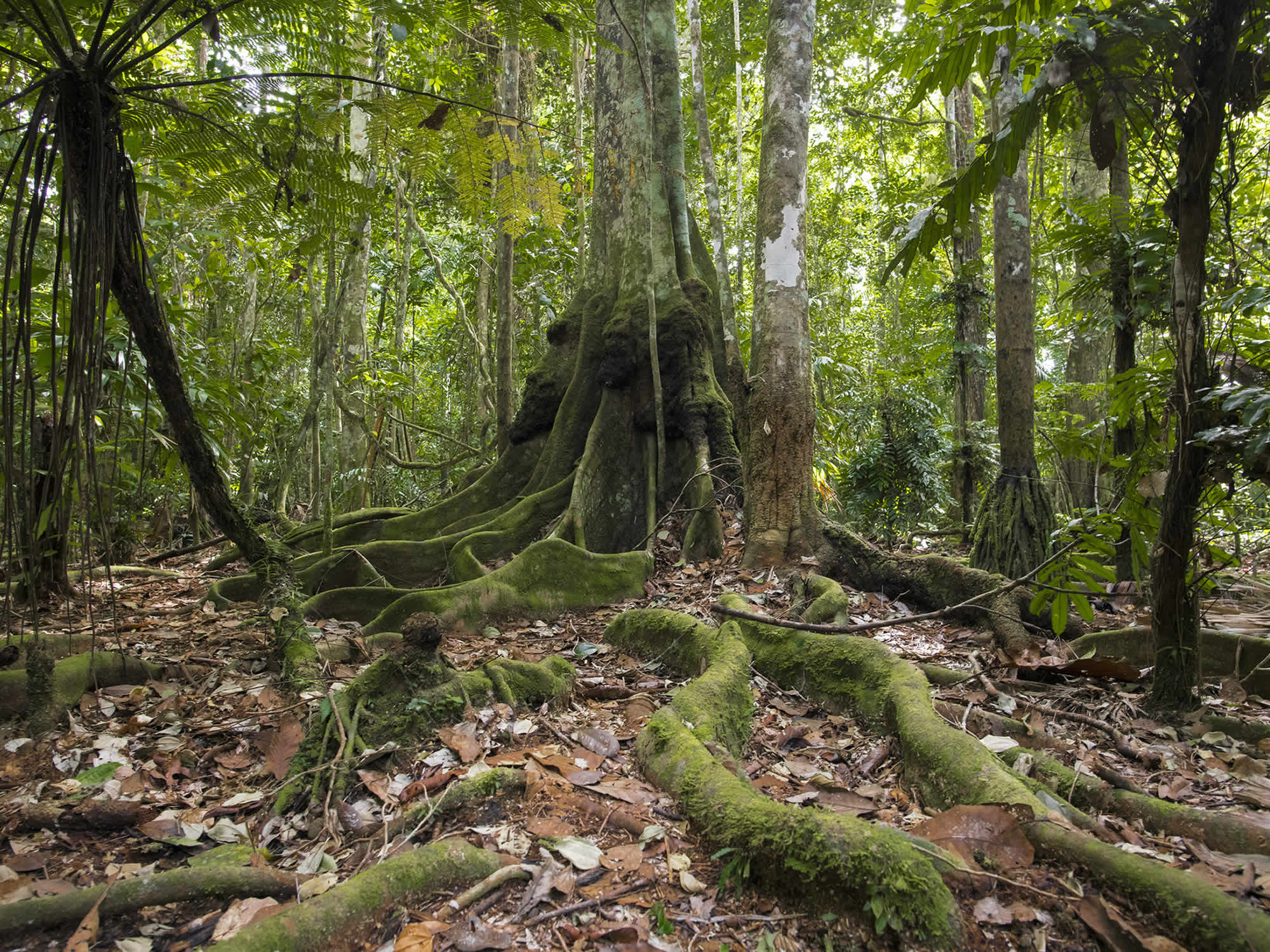
Jungle and Pampas Combined Tour
5 Days, 4 Nights
This combined experience takes the best of the traditional tours in Rurrenabaque and the Madidi National Park. Observe wild animals such as caimans, monkeys, capybaras, pink dolphins, dears, piranhas and more.
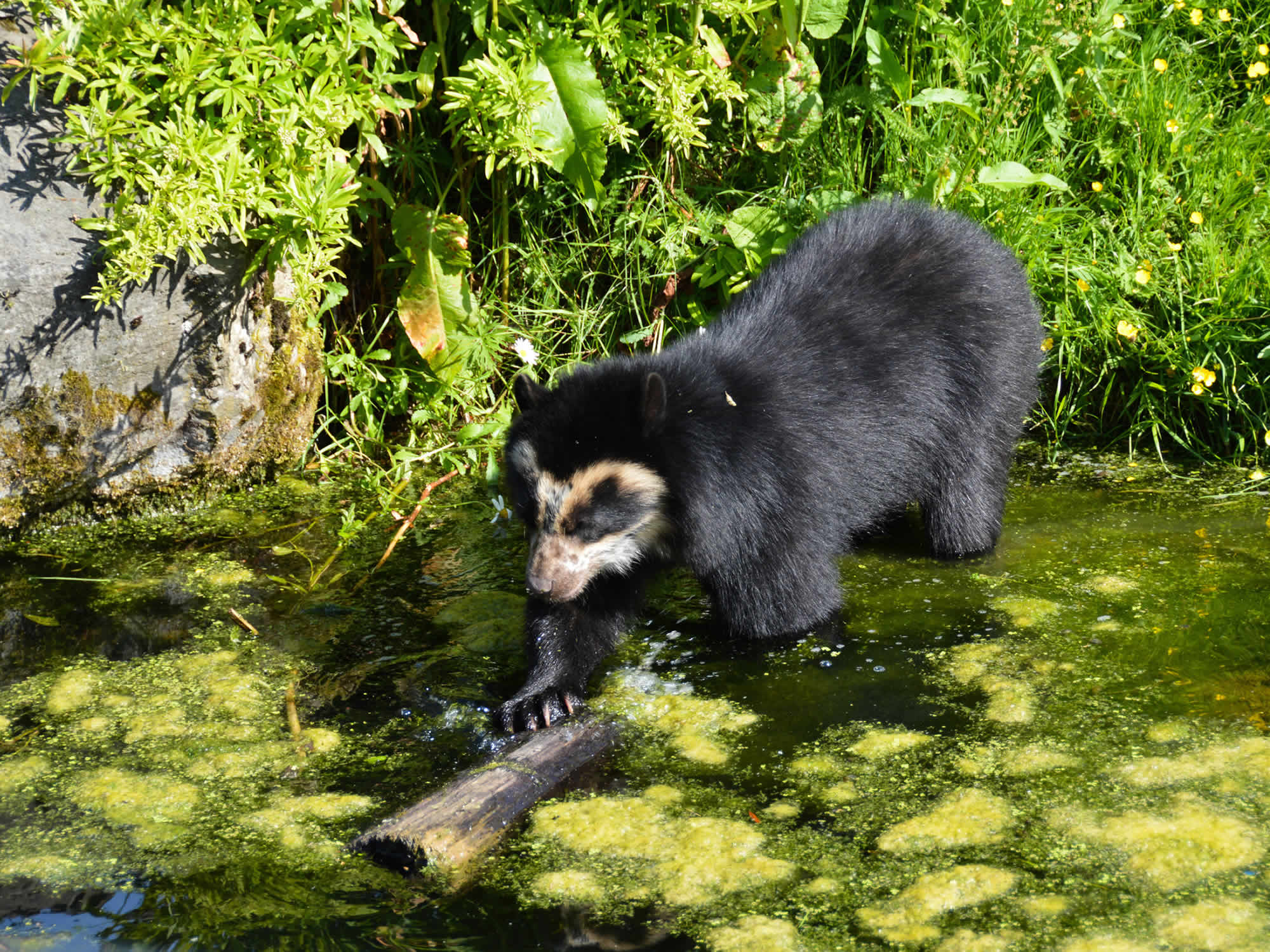
Penena Tour Rurrenabaque
This tour takes you to the heart of the Madidi National Park, close to the San Jose de Uchupiamonas community in the Tuichi valley.

Eslabon Program
4 Days, 3 Nights
This expedition tour will take you on a discovery of the remote Madidi National Park's natural wonders, rainforest and rivers.

Chalalan Eco Lodge and San Jose de Uchupiamonas Community Tour
6 Days, 5 Nights
The tour takes place in the heart of the Madidi National Park, near the indigenous community of San Jose Uchupiamonas.

Tapacare Programme - Chalalan
Enjoy the beauty of the wild nature of Rurrenabaque. This adventurous tour includes plenty outdoor activities always including contact with the stunning nature of the region. Discover the wild jungle and have the experience of you life at Chalalan.
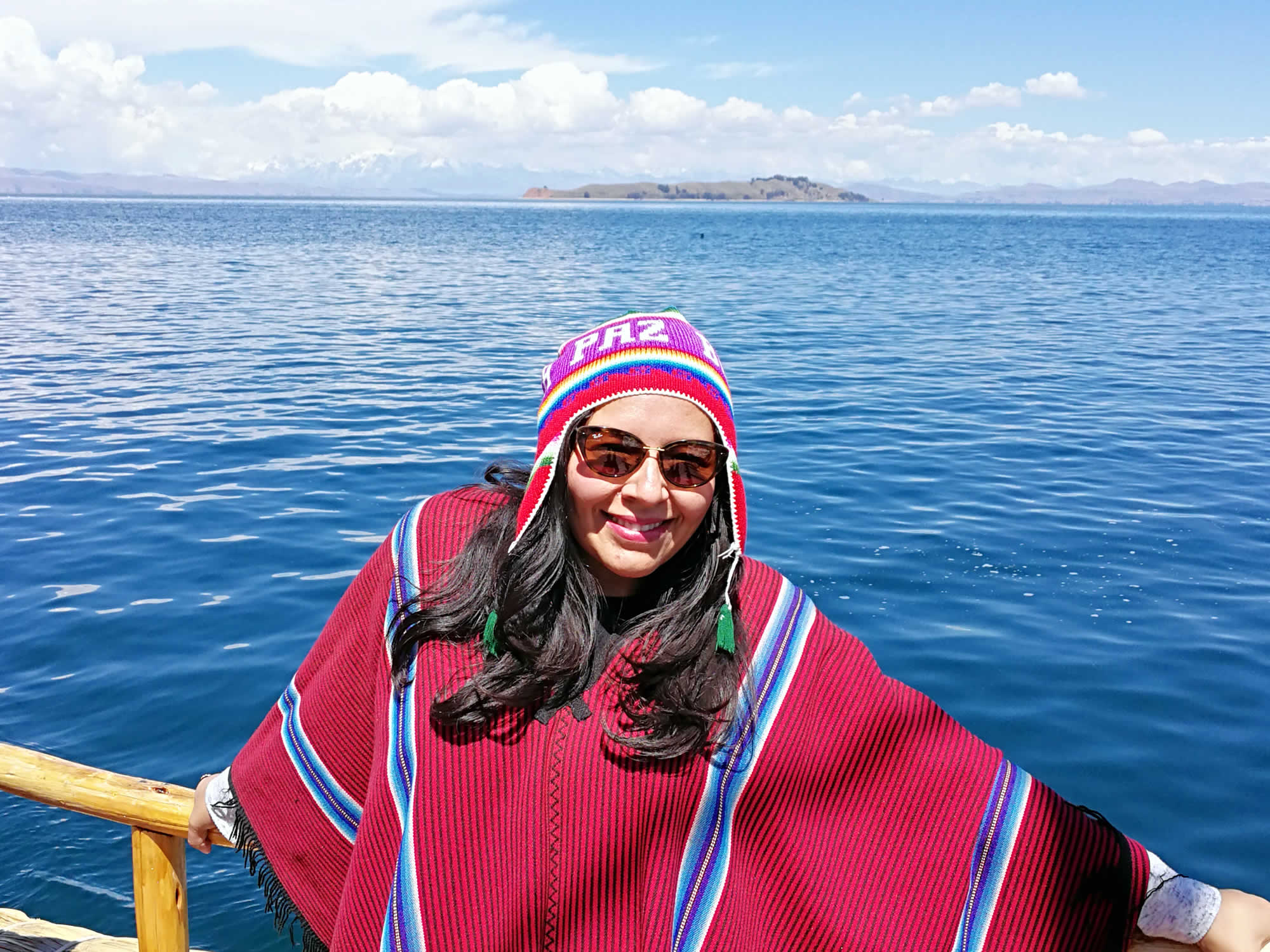
Bolivia Travel Expert
Follow us on, bolivia travel information.
- Where to go ?
- Lake Titicaca
- What to do?
- How to get there?
- Bolivia travel articles
MOST WANTED
Contact vivian, our chief bolivia travel expert.
Send us some details so we can start creating your tailor-made trip. Or if you would like to speak to us directly, call us via Skype or Whatsapp.
- Departure date: Number of Participants:
- Tour Length (days): Type of Accomodation: Premium Basic
- Country: Afghanistan Albania Algeria American Samoa Andorra Angola Anguilla Antarctica Antigua and Barbuda Argentina Armenia Aruba Ashmore/Cartier Islands Australia Austria Azerbaijan Bahamas Bahrain Baker Island Bangladesh Barbados Bassas da India Belarus Belgium Belize Benin Bermuda Bhutan Bolivia Bosnia and Herzegovina Botswana Bouvet Island Brazil British Indian Ocean Territory British Virgin Islands Brunei Bulgaria Burkina Faso Myanmar Burundi Cambodia Cameroon Canada Cape Verde Cayman Islands Central African Republic Chad Chile China Christmas Island Clipperton Island Cocos (Keeling) Islands Colombia Comoros Democratic Republic of the Congo Congo, Republic of the Cook Islands Coral Sea Islands Costa Rica Cote d\'Ivoire Croatia Cuba Cyprus Czech Republic Denmark Djibouti Dominica Dominican Republic East Timor Ecuador Egypt El Salvador Equatorial Guinea Eritrea Estonia Ethiopia Europa Island Falkland Islands (Islas Malvinas) Faroe Islands Fiji Finland France French Guiana French Polynesia French Southern and Antarctic Lands Gabon Gambia Gaza Strip Georgia Germany Ghana Gibraltar Glorioso Islands Greece Greenland Grenada Guadeloupe Guam Guatemala Guernsey Guinea Guinea-Bissau Guyana Haiti Heard Island and McDonald Islands Holy See (Vatican City) Honduras Hong Kong Howland Island Hungary Iceland India Indonesia Iran Iraq Ireland Israel Italy Jamaica Jan Mayen Japan Jarvis Island Jersey Johnston Atoll Jordan Juan de Nova Island Kazakhstan Kenya Kingman Reef Kiribati North Korea South Korea Kuwait Kyrgyzstan Laos Latvia Lebanon Lesotho Liberia Libya Liechtenstein Lithuania Luxembourg Macau Macedonia Madagascar Malawi Malaysia Maldives Mali Malta Man, Isle of Marshall Islands Martinique Mauritania Mauritius Mayotte Mexico Micronesia Midway Islands Moldova Monaco Mongolia Montserrat Morocco Mozambique Namibia Nauru Navassa Island Nepal Netherlands Netherlands Antilles New Caledonia New Zealand Nicaragua Niger Nigeria Niue Norfolk Island Northern Mariana Islands Norway Oman Pakistan Palau Palmyra Atoll Panama Papua New Guinea Paracel Islands Paraguay Peru Philippines Pitcairn Islands Poland Portugal Puerto Rico Qatar Reunion Romania Russia Rwanda Saint Helena Saint Kitts and Nevis Saint Lucia Saint Pierre and Miquelon Saint Vincent and the Grenadines Samoa San Marino Sao Tome and Principe Saudi Arabia Senegal Serbia Seychelles Sierra Leone Singapore Slovakia Slovenia Solomon Islands Somalia South Africa South Georgia/South Sandwich Islands Spain Spratly Islands Sri Lanka Sudan Suriname Svalbard Swaziland Sweden Switzerland Syria Taiwan Tajikistan Tanzania Thailand Togo Tokelau Tonga Trinidad and Tobago Tromelin Island Tunisia Turkey Turkmenistan Turks and Caicos Islands Tuvalu Uganda Ukraine United Arab Emirates United Kingdom United States US Minor Outlying Islands Uruguay Uzbekistan Vanuatu Venezuela Vietnam Virgin Islands Wake Island Wallis and Futuna West Bank Western Sahara Yemen Zambia Zimbabwe Palestine Vatican City Montenegro
- *Please note that we are unable to respond to aol.com e-mail addresses due to restrictions by AOL's filters for Bolivia.
- Budget Estimate
- Send Inquiry
+591-68583553

Discover the Magic of Rurrenabaque and the Pampas
Welcome to Rurrenabaque, a hidden paradise in the heart of Bolivia! This charming Amazonian corner awaits you to offer a unique experience. Getting here is easy; simply take a short flight from La Paz, and you’ll find yourself surrounded by the stunning natural beauty of the region.
3-Day, 2-Night Tour in the Pampas of Rurrenabaque
Ready for an unforgettable adventure? Our thrilling 3-day, 2-night tour in the pampas of Rurrenabaque will take you on an immersive journey through the jungle, where you’ll have the opportunity to marvel at the rich biodiversity of the Amazon. From sighting pink dolphins to close encounters with caimans and exotic birds, each day will be filled with exciting surprises.
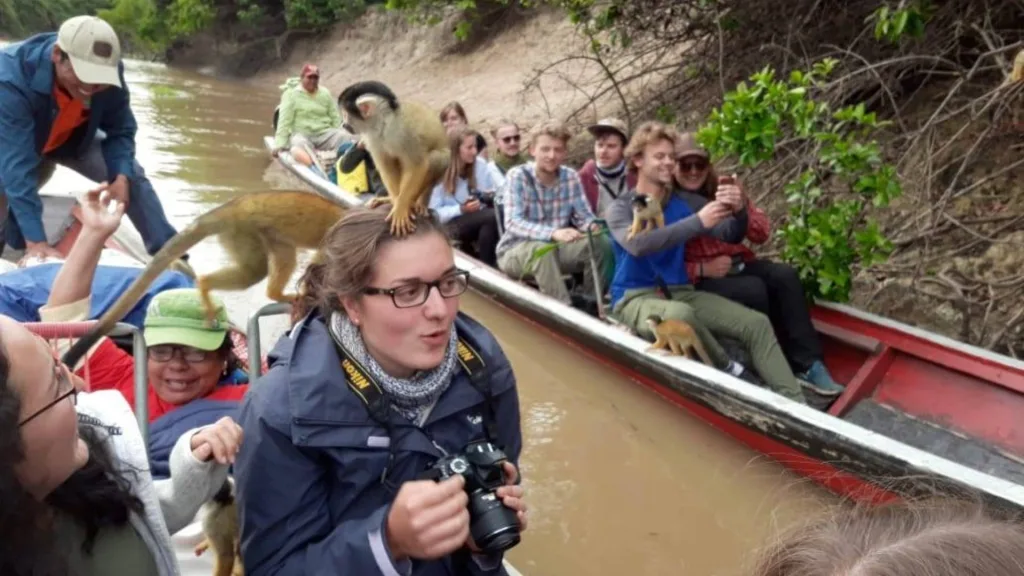
Our experienced english speaking guides will accompany you on this safe and captivating journey, ensuring that every moment becomes a memorable experience. Nights will be spent in comfortable accommodations amidst nature, allowing you to relax and enjoy the tranquility of the jungle.

You’ll head to the Pampas for a unique glamping experience. Here, our concept cabins will offer you comfort amidst nature.
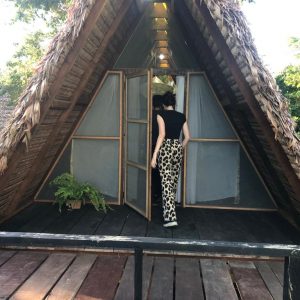
Testimonials:

Feeling excited for this adventure? Then don’t wait any longer! Press the itinerary button below to get all the details of this thrilling Rurrenabaque tour and secure your spot in this wonderful Amazon rainforest adventure.

- Destinations
- Custom trips
Rurrenabaque & Jungle
Rurrenabaque is one of the most beautiful natural reservations of the world. This one magnificent place is located in the department of the Beni. It has an altitude of 229 meters on the level of the sea. Inside this zone there are several etnias like Chimanes Mosenetes, Chamas and Tacanas. The language Tacana still remains in these places. Of there that comes the name Rurrenabaque in Tacana means " lagoon of ducks".
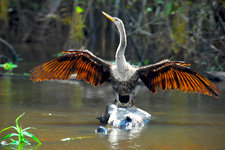
La Paz - Rurrenabaque - Selva
Along the way to our office in Rurrenabaque, the popular ecoturism center and established access point for the jungle, you`ll be able to see families of heron, sloths, and other animals in the humid lowlands of the lush Bolivian Amazon. We`ll reach Rurrenabaque at around 8:30am. At rurre we will switch to a motorized dugout canoe and then hit the Beni River for about 4 to 5 hours, admiring the wildlife that gathers in its waters and along its banks and the lush vegetation. We`ll then have lunch before embarking on a 2 to 3 hour trek while the guide teaches you about the plants of the jungle. We`ll have dinner and spend the night in our ecolodge.
Selva - Rurrenabaque - La Paz
After breakfast on the second day we`ll embark on a 4 hour trek to view the different kind of plant and animal life. Afterwards, we`ll have lunch back at the lodge before we begin our return trip to Rurrenabaque. We`ll arrive back at Rurrenabaque at around 5:00pm
Tour Includes:
- Professional guide
- Round trip shared boat
- Accommodations in the Lodge
Not Included:
- Admision to the National Park
- Fee to stay in Indigenous Community
Recommended for this tour:
We recommend to obtain the vaccine against the yellow fever.
- Clothing suitable for Humidity
- Hiking boots
- Insect repellent
Choose Among Other Tours
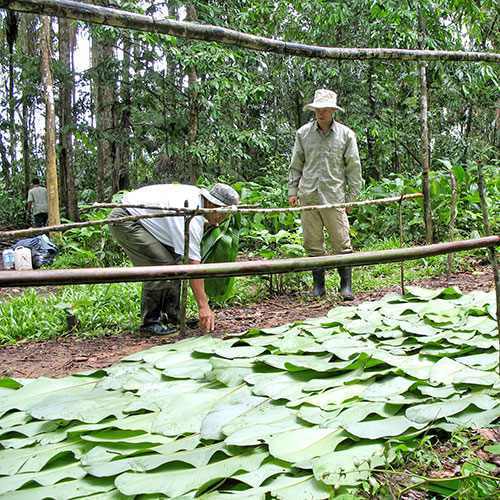
Rurrenabaque & Pampas
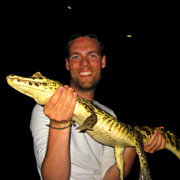
San Miguel del Bala Community Tour & Madidi Rainforest
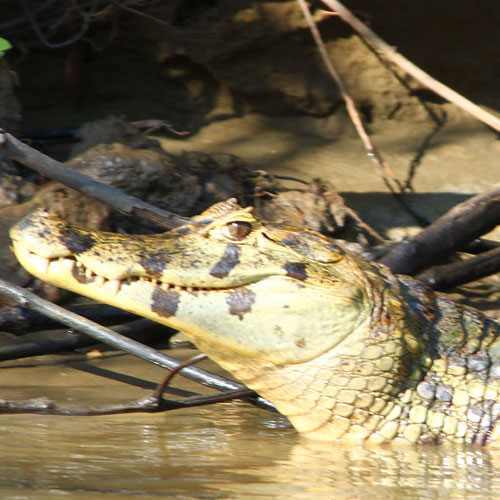
Bolivian Pampas Marshlands
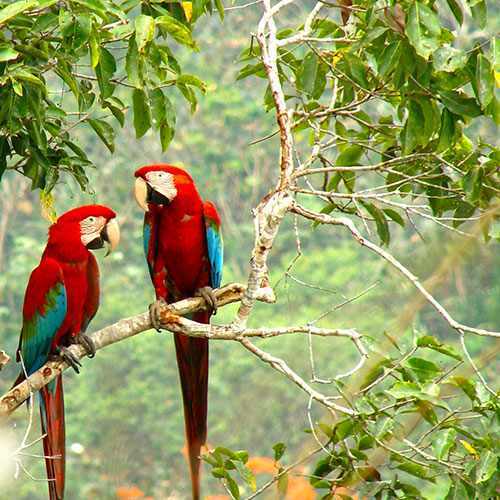
Bolivian Jungle & Marshlands Combination Tour
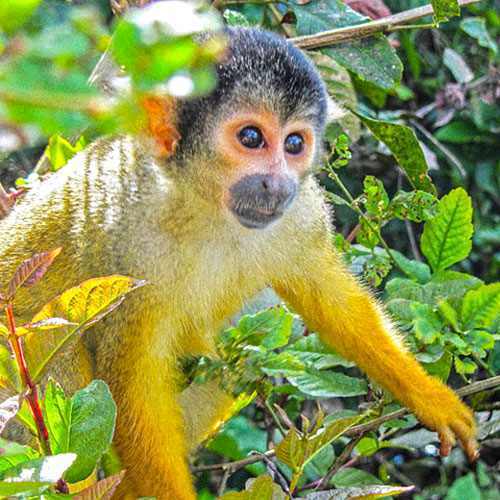
Climbing Misti Volcano
Request a price quote, rurrenabaque & jungle.
2 DÍAS / 1 NOCHE
JavaScript seems to be disabled in your browser. You must have JavaScript enabled in your browser to utilize the functionality of this website.

Pampas & Jungle Tours Rurrenabaque
Pampas tours - bolivia jungle tours.
Bolivia Pampas & Jungle Tours Guide 2018 – Everything you need to plan & arrange your Bolivian Amazon Tour
Or click on the following sections to see tours by starting place
RURRENABAQUE PAMPAS & JUNGLE TOURS
Save money by booking your Pampas & Jungle Tours and flight tickets together in these convenient all-in-one bundles
Our selection of Pampas Tour& Madidi Jungle Tour options with Flights included offers the cheapest possible way to book these combinations anywhere.
* Direct Price is total price to book the same options direct with the operator & airline.We can offer it cheaper than booking direct!
We offer our Pampas Tours for the same price as booking direct with very best operators in Rurrenabaque
Book with us for fast responses in fluent English or Spanish, confirmed spaces on tours, detailed quality information about your booking, highly secure Credit Card Payments & support via Cel/WhatsApp.
We offer our Madidi Jungle Tour options for the same price as booking direct with the best operators in Rurrenabaque.
A popular option is to visit both the Pampas & the Jungle and these combination tours are the best way to combine both these options
Book with us for Fast responses in fluent English or Spanish, confirmed spaces on tours, detailed quality information about your booking, highly secure Credit Card Payments & support via Cel/WhatsApp.
Chalalan is an award winning ecolodge offering premium Amazon Rainforest tour experiences.
We are an official agent for Amaszonas - our flight prices are exactly the same
FLIGHTS TO / FROM RURRENABAQUE
A visit to the Bolivian Amazon is a highlight for many traveler’s that visit the country.
A large percentage of Bolivia is jungle or pampas wetlands and these tropical rainforests are home to an incredible amount of wildlife.
Rurrenabaque is the starting point for most Bolivian Amazon trips and offers a variety of tours from the most popular 3 Day Pampas Tours, multi day Madidi National Park Jungle tours or combination tours including both.
The town is easily accessible by several daily flights from La Paz and being a small town is a nice place to relax for a few days offering a completely different vibe to highlands.
We have a variety of different tour options for both the pampas and the jungle , ranging from the best budget options through to the world famous Chalalan Ecolodge.
We are also official agents for selling Amazonas Flight tickets (same price as the airline and issued using the airlines own system) and arrange hotel booking for a few recommended places in Rurrenabaque.
Not only can you can book everything you need in one place through us we also have some incredible value discounted tour + flights bundles that are the cheapest possible way to get these combinations anywhere!
Read through our guide below and compare Pampas versus the Jungle tours to see which you would most like to do.Of course many people choose to do both as they offer different experiences.
- 1. Pampas Tours
- 2. Jungle Tours - Madidi National Park
- 3. Combo Pampas & Jungle Tours
- 4. Getting to Rurrenabaque
- 5. Wildlife in the Pampas & Jungle
- 6. Rurrenabaque Town
- 7. Malaria, Yellow Fever & Dengue
- 8. What To Take On Amazon Tours
Last Updated 3rd August 2018
PAMPAS TOURS
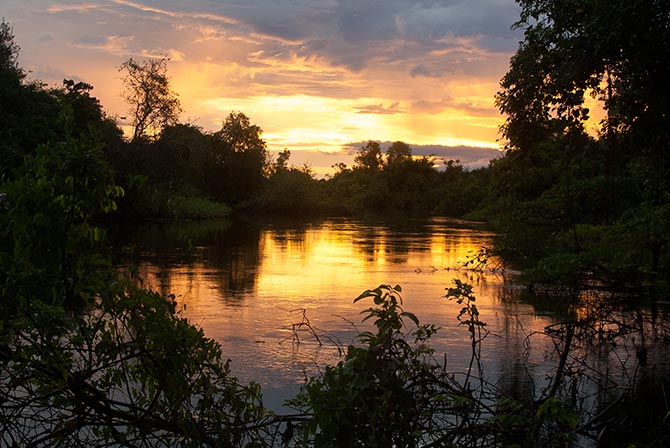
The most popular Amazon tour options in Bolivia are the 3 Day Pampas Tours and this is because it is the best place to easily spot wildlife.
The Pampas are open tropical wetlands which are home such animals as pink river dolphins, alligators, caiman, anacondas, turtles, capybaras, piranhas, monkeys, lots of birds and many others.
You can see more info on the animals you might see in the Wildlife Pampas & Jungle Section
Because it is not as dense as the jungle rainforest the animals are much easier to see and as you explore the river, canals and lagoons in a motor-powered canoe you are often able to get very close to them without startling them.
It is a great way to see wildlife in its natural habitat and get some amazing photos.
Most pampas tours are 3 days in duration which is the ideal length as any longer you would need to report some same activities and in 2 days you would spend over half the time jus traveling.
The first day you travel by road from Rurrenabaque to the town of Santa Rosa where, after lunch, you will board the boat and start the river trip towards your lodge.
The wildlife spotting starts here though, and you often see dolphins right by the boat port. Along the way your guide will be using his well-trained eyes to spot animals of interest and point them out to you, often stopping the boat to allow you to get a better look.
To time it takes to the lodge depends on which operator you are with as each has their own lodge in different areas but is commonly around 1 or 2 hours. After arriving you are shown to your room and given refreshments.
The lodges you stay in are rustic but adequate and will include bed & sheets/pillows, mosquito nets, electric lighting and probably a few sockets for charging things. Bathrooms are usually separate and shared although there are private bathroom options with some operators.
There will be a dining area and usually places with hammocks to relax. The buildings are usually of wooden construction, raised off the floor and have mosquito screens (no glass windows).
The activities during the tour usually include swimming with dolphins, piranha fishing, night time alligator & caiman spotting, looking for anacondas and more exploration by boat to spot animals.
Whilst there are no guarantees with wildlife most visitors get to see dolphins, monkeys, turtles, alligators, caimans, capybaras and lots of birds. It is common that someone catches a piranha during the fishing activity but not always and you will certainly need luck to find an anaconda although during dry season your chances are better.
It is not uncommon to see a sloth on the drive to Santa Rosa on the first morning as they hang about in the trees along the road.
So if you want to see lots of wildlife the Pampas Tours are the best option and because they are so popular there are daily group departures for most tour options.
You can see all the tour options by browsing ALL TOURS
JUNGLE TOURS - MADIDI NATIONAL PARK
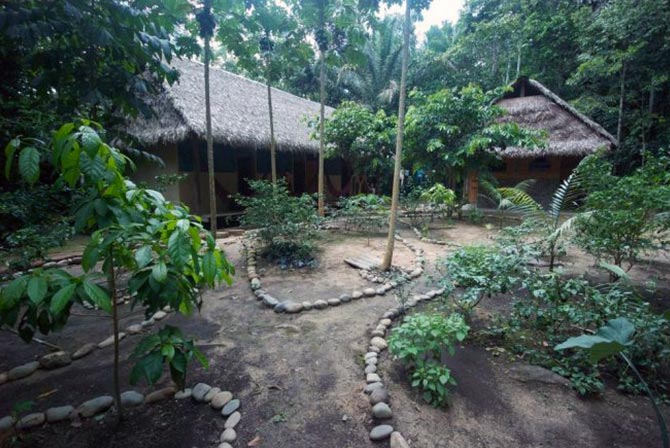
Jungle Tours in Rurrenabaque offer a different experience to the pampas and most take place inside the world famous Madidi National Park.
These tours take you into the thick, dense tropical rainforest that most people imagine when they think of the Amazon jungle.
Madidi jungle is considered the most bio diverse environment on the planet and at 18958km2 is one of the largest national parks in the world.
Every year there are new species discovered in the Madidi and a 3 year survey started in 2015 that recently concluded managed to identify 1362 new species in that period alone! Check out this New York Times article all about the study.
There was even a new species of monkey identified in 2004 called the Madidi Titi.
It is said to contain over 1100 species of bird which is about 11% of the species in the world.
The area is also home to 46 indigenous communities from six different tribes who live within the national park, many of who use traditional techniques to survive in the rainforest.
Jungle Tours to Madidi start from Rurrenabaque and after a boat ride up the Beni River you take a short walk to your jungle lodge that will be used as the base for excursions into the jungle areas around.
Most people take jungle tours of 2 or 3 days but there are options for 4, 5, 6 or even more days that enable you to trek deeper into the jungle and camp. These longer options can provide a better change of finding the more elusive animals like the jaguar that will often keep their distance from the areas inhabited by humans.
During a typical tour you will embark on a series of short hikes with your guide returning to the lodge for rests and meals after each. These hikes are not difficult, but the hot and humid atmosphere of the jungle can be quite tiring in itself.
Although you will try to find jungle animals such as wild pigs, monkeys and others but being thick and dense it is harder to spot them than in the pampas, but you usually get to see something.
You will also be exploring and learning about the rainforest environment, its medicinal plants, strange trees, finding weird and wonderful insects & arachnids such as the tarantula. Your guide might explain traditional hunting techniques or show you jungle fruits that can be eaten or used to make handicrafts.
A popular activity during the jungle trips is to go to where the wonderfully brightly colored macaws nest and observe them. The macaws nest in cliff faces and from this viewpoint you have a wonderful panorama of the surrounding jungle.
At night time the sounds of the jungle really come alive and it is then that the sheer quantity of living creatures that inhabit the jungle become most apparent. Taking a walk in the jungle at night time you get to experience a whole different side of the rainforest and for many this is an unforgettable experience.
The jungle tours offer an alternative experience to the Pampas tours and it completely depends on what your own interests are, the amount of time you have and your budget as to which you choose to.
Most people that take a jungle tour also do a pampas tours to ensure they have the complete amazon experience and a popular way to do this is with a tours that combines both.
You can see all options by browsing ALL TOURS
COMBO PAMPAS & JUNGLE TOURS
It is possible to book separate pampas and jungle tours but that will require that you spend a night in Rurrenabaque in between.
The pampas area is located about 2.5 -3 hours drive north east from Rurrenabaque and the Jungle lodges are accessed by boat boarded directly in Rurre and are located in a more south to south-west direction, so a return to Rurrenabaque is unavoidable.
If you book a combination Pampas and Jungle Tour then you will be transferred straight to the Jungle lodge after you return from you Pampas tour meaning you do not have to have a night in a hotel separately.
Combo Jungle & Pampas Tours are usually 5 Days which consist of 3 days in the Pampas followed by 2 days jungle tour. There are also 4 day combo tours that include 2 day pampas tour and 2 day jungle tour and a 6 day option with 3 days in each.
GETTING TO RURRENABAQUE

To get to Rurrenabaque you can either take a flight or go by road. Most people choose to take a plane as the prospect of an 18 hour or longer bus journey on what is the continuation for the “Worlds Most Dangerous Road” is usually not a popular idea.
Whilst it is possible to fly to Rurrenabaque on an early flight and start a tour the same day it is better if you can get there the day before as flights can be delayed sometimes.
For the flights returning to La Paz it is possible with some tours to get a flight back on the last day (last flights are usually around 5.30-6.00pm) but we advise people to allow time for possible delays especially if you have an international flight to catch same or next day. During rainy season it is not uncommon for people booked on the last flight of the day to have to wait until the following morning for a departure if backlogs occur.
FLIGHTS TO RURRENABAQUE
The airline Amaszonas fly from La Paz to Rurrenabaque from 2 to 6 times a day depending on the season and day of the week (weekends flights are less frequent) and the flight time is about 45 minutes.
See Details for Rurrenabaque Flights
*We sell flights at the same price as Amazonas and issue the tickets using the same system.
The airline TAM is the only other airline that schedules flights to Rurrenabaque but have in general not been running flights for some time now so we cannot offer this.
BY LAND / BUS TO RURRENABAQUE
For those looking to save money or simply wanting the experience of traveling by road to Rurrenabaque buses from La Paz depart from the Minasa Bus terminal near to the District of Villa Fatima in La Paz each morning around 11am (times change slightly sometimes so check)
The scheduled time for the journey is about 18 hours but it can often take longer and in rainy season there can be significant delays due to landslides and destroyed sections of road meaning trips of 40 hours plus are not unheard of.
If it also possible to rent 4x4s to drive you down to Rurrenabaque and it takes about 12 -14 hours usually but this is not a cheap option and not often done any more.
WILDLIFE IN THE PAMPAS AND JUNGLE
As Madidi National Park is known as the most ecologically diverse place on earth & the pampas protected area is teeming with mammals, birds, amphibians, fish and more we cannot attempt to list every kind of wildlife you might encounter in the region.
So you will find below a list of the most common or popular creatures that you might see during the Pampas or Jungle tours plus some interesting ones that you are less likely to see unless you are very lucky!
Please note though some are easier to see than others and being wildlife there are no guarantees you can spot them during a tour.
PAMPAS WILDLIFE
Click on an animal name to see more info

Pink River Dolphins - the slow-moving water of the Yacuma river is the preferred habitat of the rare freshwater pink river dolphin known locally as the Bufeo. It is a subspecies of the Amazon River Dolphin and is considered an endangered species. They are protected by Bolivian law and were declared a national treasure in 2012.
These inquisitive creatures sometimes interact with swimmers during the tours, playfully nibbling their feet and poking them with their noses. The quieter and smaller the group the better the chances they will approach.
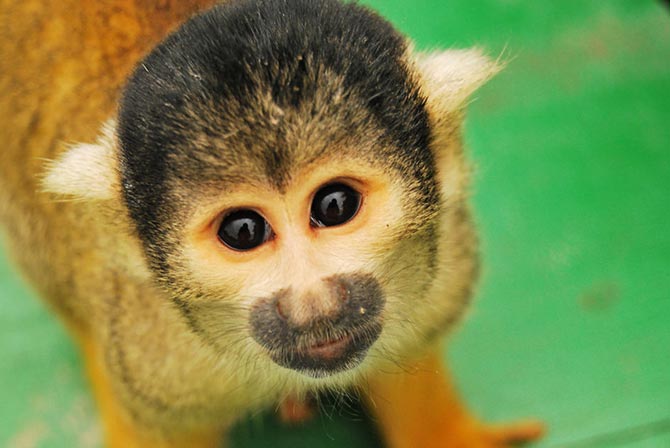
There are a variety of types of monkey in the Pampas area including squirrel monkeys, spider monkeys, howler monkeys, Beni and Olalla titi monkeys, and capuchin monkeys.
Of these you will almost certainly see squirrel monkeys during a pampas tours as they are extremely inquisitive and have unfortunately become accustomed to receiving food from tourists. The braver monkeys of a group will often even climb aboard the boat to try to get snacks. You shouldn’t give the monkeys food as they can become dependent on it and especially not snacks and processed food as it can be very bad for them.
Spider monkeys & capuchin monkeys are quite often seen in the pampas also but howler monkeys are a little less common but still possible.
The Beni and Olalla titi monkeys are endangered species and are seldom seen during tours.
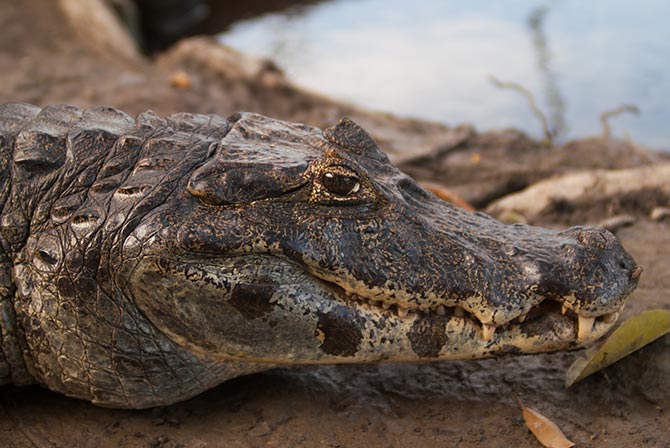
Caiman (Caimaninae) are a subfamily of the alligator family (Alligatoridae) and there are a variety of types of which the Spectacled Caiman and the smaller Black Caiman are the most common to be seen in the Pampas area.
Black Caiman are the largest species of caiman and can grow up to lengths of 5 meters and weigh more than 400kg.They are the largest predator in the whole amazon.
Spectacled Caiman are smaller growing to a maximum size of about 2.5 meters and around 60kg. They are also referred to as White Caiman or Common Caiman.
Caiman are considered very aggressive and apart from humans have few natural predators they need to be aware of. Jaguars and anacondas have been known to prey on young caiman.
There are only two kinds of Alligator proper and that is the American Alligator and the Chinese Alligator neither of which live in South America. There are no crocodiles in Bolivia.
What are often referred to as alligators in the Pampas are in fact older adult Black Caiman as they are similar in size to the American Alligator when fully mature.
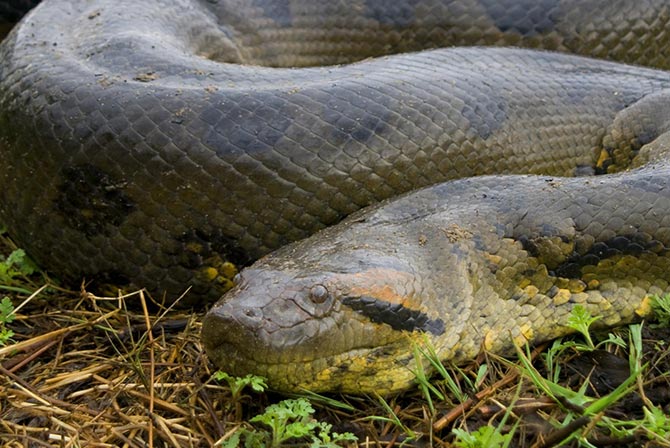
The green anaconda, sometimes called the common anaconda, is the largest snake in the world by body mass. It is a constrictor that often lies submerged in water awaiting its prey.
It can grow to be over 5 meters long but there are numerous myths of anacondas reaching much longer lengths giving birth to the mythical name “giant anaconda” but this has never been proven.
The numbers of anacondas in the Pampas region have fallen drastically in the last decades partly due to the effects of tourism and also due to local development.
You need a bit of luck to find one during a tour as you search through the swamp lands to try to find one lying in the water, but your chances are better in the dry season when there is less water for them to lie in.

Capybaras are the largest rodents in the world and live in herds on the banks of rivers and lagoons.
Being the size of a large dog people are often surprised to find out they are rodents but luckily they have the cuteness of their close relative the guinea pig so people don’t have the same repulsion of them as they do of rats and mice!
Some people even keep capybaras as pets in the US and they are actually very friendly when domesticated.
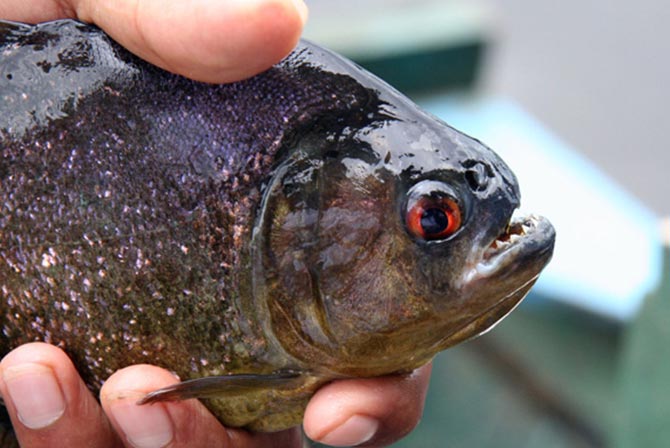
Native to South America and usually growing up to a maximum of 30cm in length the Piranha is well known around the world.
One look at one in real life and most people decide they are pure evil in fish form. Razor sharp rows of teeth set in incredibly sharp jaws add to the myth that they can kill and strip a person of flesh in minutes.
Whilst most of these stories are exaggerated and piranhas rarely attack humans there was a famous case in Bolivia in 2012 when a drunken 18 year old fell in a river in Rosario de Yata and was eaten alive by Piranhas, so the stories are not entirely without basis.
During Pampas tours you fish for Piranhas using small chunks of meat or fish and can experience how fast they bite firsthand. Be careful with them if you catch one!
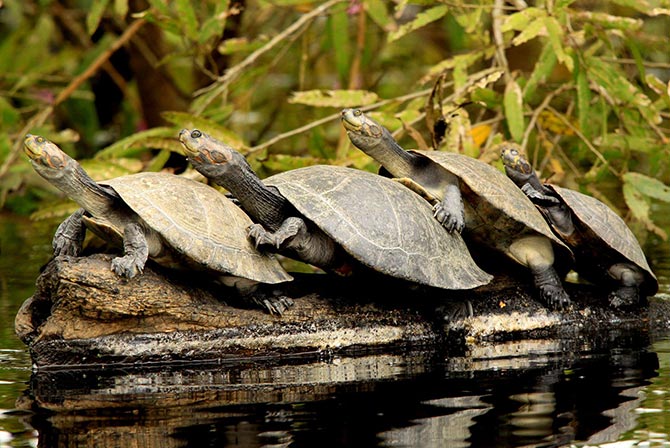
As you travel along the river during your Pampas tour you will see lots of turtles sunning themselves in rows on logs near the river banks. Often as the boat gets closer they will dive into the water as the noise of the engine startles them.
These turtles are Yellow-Spotted river turtles and if you look closer you will see some yellow markings on the heads of the turtles that give it its name. The colors are brighter in the younger turtles than the older ones.
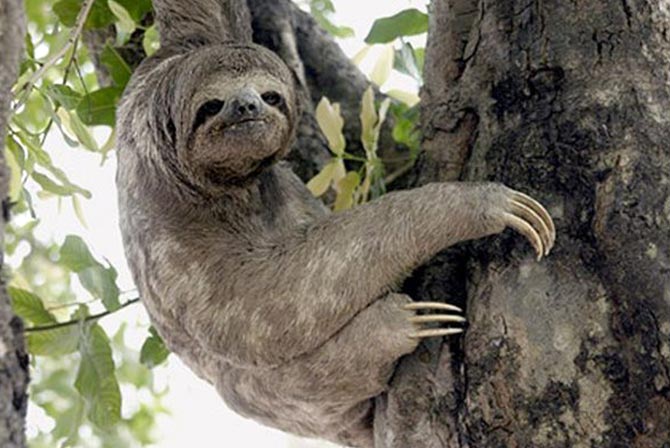
Seen hanging around lazily in the high branches of trees the 3 toed sloth might seem like it never moves but it can in fact change trees a couple of times per day.
The reasons they are so slow moving is due to a very slow metabolism so moving very little conserves energy but also as a protection against some of their natural predators like big cats that hunt by sight and detection of movement.
3 toed sloths are in fact quite good swimmers, but this is rarely witnessed.
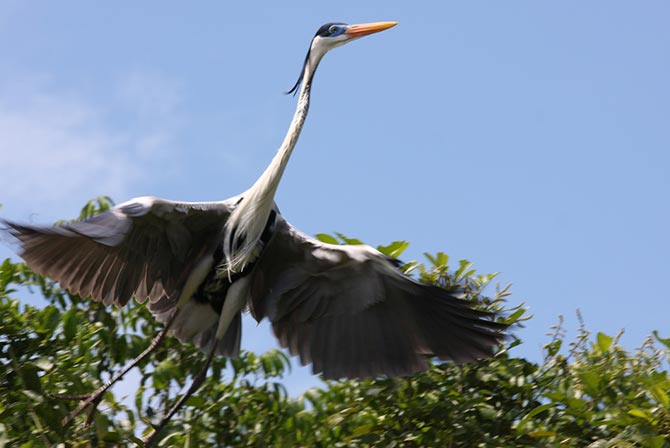
The pampas area is home to many species of birds including herons, kingfishers,storks, hoactzins, macaws, chuvi and great black hawks.
You never know what you will see exactly but you will certainly see a number of different birds during your tour.
JUNGLE WILDLIFE
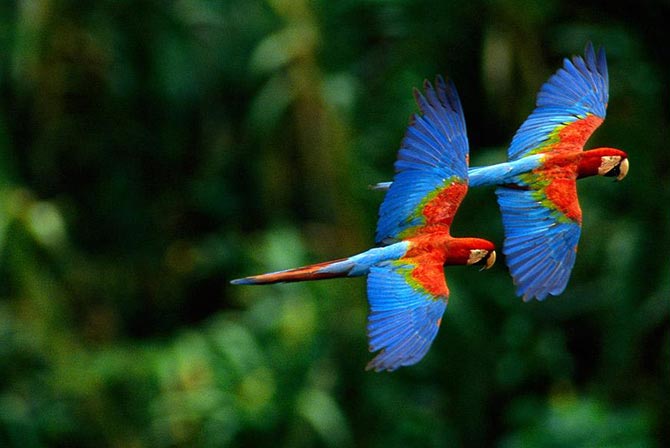
The jungle tours are the best place to go and see Macaws as there is a well-known nesting cliff that you can visit where it is easy to see these beautiful parrots.
They are at their noisiest early morning or late afternoon
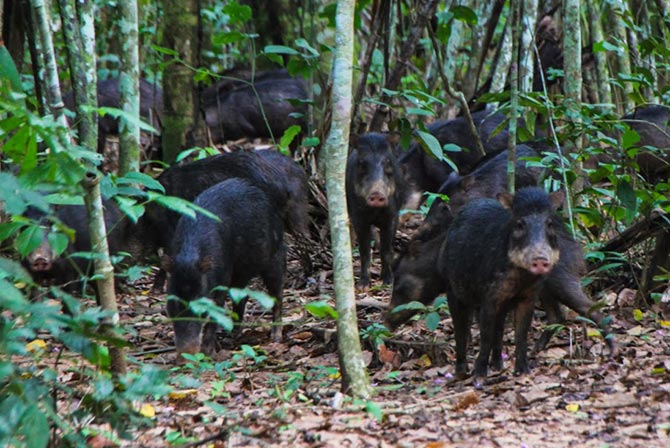
These hairy black pigs roam in packs in the rainforest and seem to appear from no where very suddenly. They are hunted by the indigenous people in the region and often kept as “pets” in the village until such time they are needed for a feast.
They are not dangerous and will likely run away startled if they see you but you should not approach them if they have young with them as the mother can become protective.
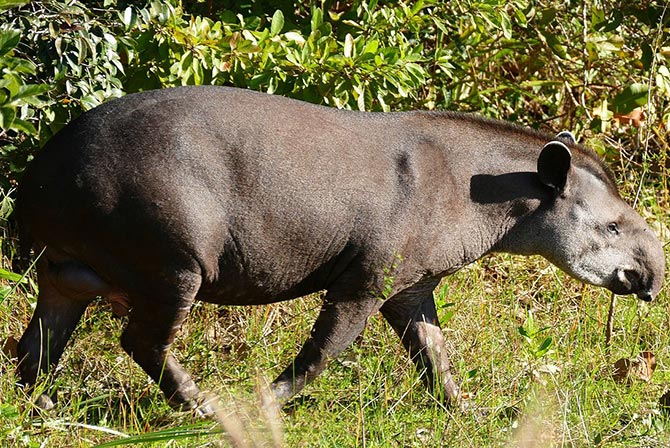
Yet another animal on the endangered list the Tapir which is the largest Amazonian mammal.
You might hear it referred to as a “jungle cow” by some guides but its long bendy snout means it is very dissimilar to a cow.
It might look sluggish but it can run and swim pretty quickly which is its main defense as it is a peaceful herbivore and feeds mostly on roots and leaves.
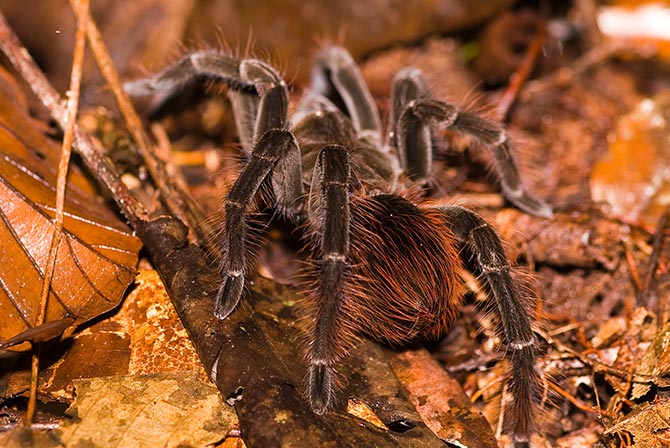
There are in fact different kinds, thought to number of 900 types, of tarantula spider in different parts of the world.
They live in burrows with an entry hole on the surface so a common tactic that your guide might use to entice one out is to move a small stick near the entrance to fool it into thinking there is potential prey nearby.
The tarantulas in the Bolivian jungle are covered in thick black hair which can cause irritation to the skin of touched and of course have a painful venomous bite.

Giant Anteaters, also called Ant Bears, live in jungles and in grassy plains and ,not surprisingly, live on a diet of ants and termites.
The have a long tongue that is very sticky that they use to access crevices and holes to harvest the ants.
It is not common to see them during a tour though but it has been known, more so on the longer jungle tour options.
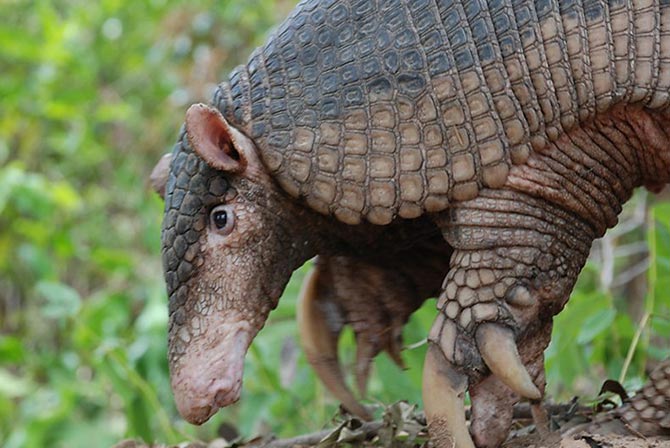
The Giant Armadillo is another animal that likes to feast on ants and termites, but also worms and other insects, and it is yet another one of the animals in Madidi that is on the endangered list.
Often growing up to 30kg in weight the giant armadillo is the largest of the armadillo species.
It is nocturnal, lying dormant in a burrow during the day, and coming out to feed at night. Chances of spotting one on a tour are not very high but during your night walks it could be possible if you are lucky or the guide knows where one might be.
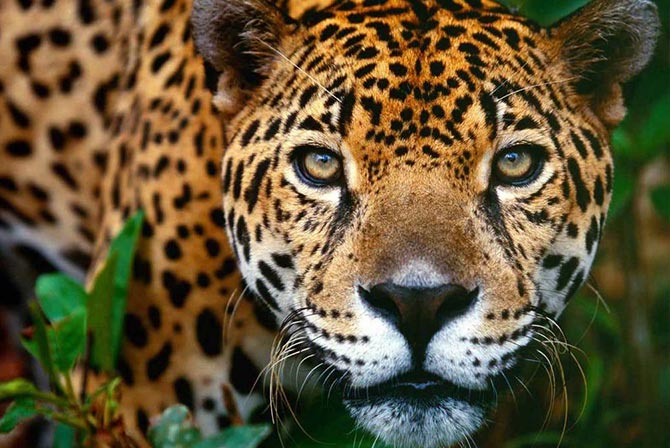
The majestic Jaguar is the largest cat species in South America and mostly lives in the tropical jungles and marshlands areas but also inhabits the grassy lowland plains.
It is an elusive animal and has for a long time been under threat due to cattle farmers seeing it as a menace or settlements seeing it as a danger.
In the last few years though the threat to jaguars has increased dramatically as the influence of China grows in Bolivia with the arrival of many Chinese business and immigrants, and with them an sharp increase in the illegal trade of rare animal parts.
Ocelots are much smaller and have a distinctive intricate pattern of dots and stripes in colors of black, white and orange. Its fur was once highly sort after but it now illegal which has gone a long way to ensure it is not an endangered species.
Pumas are often considered more of a mountain cat but can in fact live in a variety of environments including the jungle. They are mostly solitary but recent evidence suggests that they do in fact socialize with other pumas at certain times.
It is difficult to see a Jaguar, Ocelot or Puma during a jungle tour and even though your chances are better on the longer tours that go deeper into the jungle, it still requires a lot of luck.
RURRENABAQUE TOWN
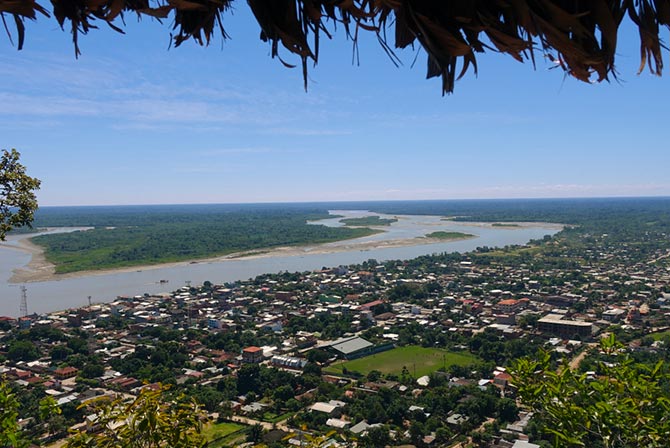
The town of Rurrenabaque sits on the banks of the Beni River and is located about 250 miles (410km) from La Paz. It is part of the department of Beni and the municipality of Rurrenabaque of which it is the capital.
It has a small airport about 20 mins drive from the center and it mostly services flights to / from La Paz , although there are also sometimes scheduled flights to / from Santa Cruz.
Sitting at an altitude of about 300 meters it’s climate is sunny, hot and humid, usually averaging temperatures of around 30C up to about 35C.
It is a small town with a population of around 20,000 people but has plenty of facilities for tourists as it receives many visitors per year as it is the starting point or both Pampas and Jungle Tours.
The center of the two is made up of a few principal streets and a sleepy main plaza. You will find various hotels, hostels, agencies and tourist cafes dotted around as well as useful places like the Amaszonas office, a laundry, some banks and a small market all within easy walking distance of each other.
The bus station is just a few more blocks out of town and is also walkable.
Map of Rurrenabaque
“Rurre” as it is commonly referred to was put on the tourist map when an Israeli traveller called Yossi Ghinsberg was rescued by the locals from nearby San José de Uchupiamonas after an adventurous excursion went wrong in 1981.
He spent weeks lost in the jungle before being found and later returned to help them start the now world famous ecolodge Chalalan . His story attracted travellers to the area and the tourism industry in the town started to grow.
Yossi Ghinsberg turned his story into a book and in 2017 it was made into a film called Jungle staring Daniel Radcliffe .
MALARIA, YELLOW FEVER & DENGUE
Visitors to both the Jungle and Pampas should take care to protect themselves from mosquito bites and other insects both for their own comfort but also due to the possibility of contracting insect borne diseases.
Most tours and hotels supply mosquito nets in their accommodations, so you will just need to bring suitable clothing and insect repellent.
Whilst insect repellent is available in the pharmacies (drugstores) in Rurrenabaque it might not be possible to by good quality options and products such as high potency DEET based creams and sprays are not easy to get. You will a little more success in La Paz as there are some DEET products of up to 29% strength available, but you would be best to bring something from your home country for the best effectiveness.
N.B - DEET is extremely harmful to animals so whilst you should not be handling animals during your tour anyway be especially careful if you are wearing DEET. For example, if your group is successful in finding an anaconda do NOT under any circumstances touch the anaconda if you have DEET on your skin as snakes partly breathe through their skin and they are easily poisoned by the slightest contamination.
Whilst in theory malaria is a possibility the risk in Rurrenabaque, the pampas and the areas in the jungle visited by tourists is minimal. There has not be a recorded case of malaria being contracted in well over a decade. If you do want to take malarial medications then you should bring them with you as there will be limited types available.
YELLOW FEVER
Yellow fever is a potential risk in the area and you should have your yellow fever vaccination before traveling. It is in fact a requirement to enter Bolivia (even if it is not always enforced). Yellow fever tends to occur in outbreaks that are well publicized so it is quite easy to find out if there is a current risk when you are in the country.
DENGUE FEVER
Dengue fever is also a potential risk and, like yellow fever, outbreaks are usually reported and publicized when it is considered an issue. There tends to be a higher risk during rainy season when there is more stagnant water lying around making ideal breeding conditions for the mosquitoes.
WHAT TO TAKE ON AMAZON TOURS
Whilst Rurrenabaque is not a large town you can buy basics there no problem so no need to worry about running out of toothpaste, soap, ibuprofen etc. It is worth noting though that some things, due to the logistics of getting them there, are little bit more expensive.
Here are some things you should think about bringing with you:
- Cash – there are a couple of ATMs in Rurre and they regular run out of cash and often do not work with foreign cards. Bring all the case you need with you for your trip – cards are not commonly accepted in restaurants and shops for payment.
- Insect repellent & insect bite cream.
- Any medications that you need / want. You can get things in Rurre but supplies are limited so best not to risk it for things that are essential.
- A torch – jungle and pampas camps might use generator power, so useful for those late night trips to the bathroom if the lights are out. Also needed for the jungle night walks.
- Good Quality Sun cream – you can get some in Rurre but again it might cost more and not be the kind you want.
It is hot and humid so you will likely want to be wearing shorts and tshirt most of the time but you will also need some lightweight long sleeve shirts and long trousers to protect for the early morning and evenings when the mosquitoes come out to bite. Synthetic materials that are quick drying are the way to go. Cotton does not dry easily and leave you feeling damp and permanently sweaty.
Hopefully our guide and info has inspired you visit Rurrenabaque and take one of the incredible Pampas or Jungle tours or one of the popular combo options.
Remember to check out our popular bundle options* with flights and tours as these are much cheaper than booking direct with the airline and operators themselves!
Last Updated 22nd August 2018
- An error occurred, please try again later.
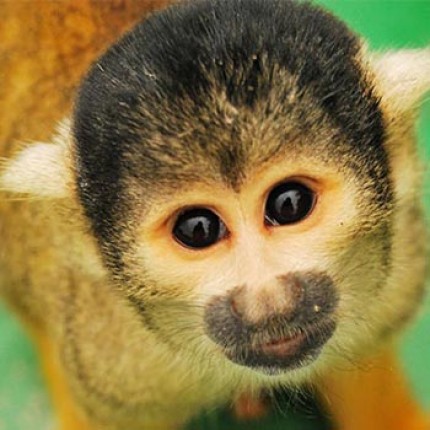
Pampas Tour (Dolphins) + Flights La Paz-Rurre-La Paz
Incredible value 3 Day Pampas Tour with flights La Paz - Rurrenabaque and Rurrenabaque - La Paz The 3 Day Pampas Tours is with Dolphins Travel - and the return flights are with Ecojet airlines. Pampas and see all the wonderful wildlife it has to offer.

Pampas Tour (Mashaquipe) + Flights La Paz-Rurre-La Paz
Incredible value 3 Day Pampas Tour with flights La Paz - Rurrenabaque and Rurrenabaque - La Paz at a discounted price. The 3 Day Pampas Tours is with Mashaquipe Tours who are well known as being one of the best Rurrenabaque operator and are our most popular Pampas tour company.This is the cheapest possible way to book flights and mashaquipe pampas tours anywhere!
Regular Price: $480.00
Special Price $470.00
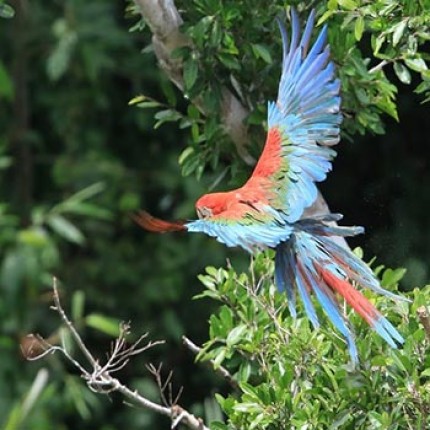
5 Day Pampas & Jungle Combo Tour (Mashaquipe) + Flights La Paz-Rurre-La Paz
Save money by booking this 5 Day Jungle & Pampas Combo Tour with flights La Paz - Rurrenabaque and Rurrenabaque - La Paz at a discounted price. This 5 day tour is our most popular Jungle & Pampas combo and is run by the operator Mashaquipe Tours who are well known as being one of the best operators in Rurrenabaque.This is the cheapest possible way to book flights and mashaquipe jungle & pampas combo tours anywhere!
Regular Price: $600.00
Special Price $590.50
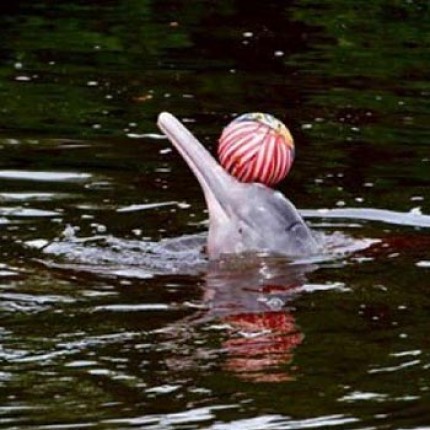
4 Day Pampas & Jungle Combo Tour (Mashaquipe) + Flights La Paz-Rurre-La Paz
Save money by booking this 4 Day Jungle & Pampas Combo Tour with flights La Paz - Rurrenabaque and Rurrenabaque - La Paz at a discounted price. This 4 day tour is a popular optionfor Jungle & Pampas combo and is run by the operator Mashaquipe Tours who are well known as being one of the best operators in Rurrenabaque.This is the cheapest possible way to book flights and mashaquipe jungle & pampas combo tours anywhere!
Regular Price: $540.00
Special Price $520.00
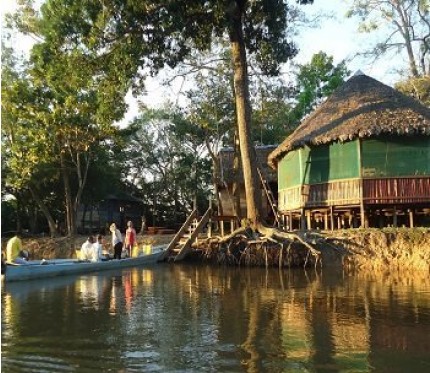
Pampas Tours 3 Days
3 Day Pampas Tour with Indígena Tours perfect for the budget backpacker at the best price available. Join one of the tours leaving daily and get to see lots of wildlife such as Pink River Dolphins, caiman, anaconda, monkeys and more.
Indigena Tours are the only Green Action Eco Certified budget pampas tours operator in Rurrenabaque.
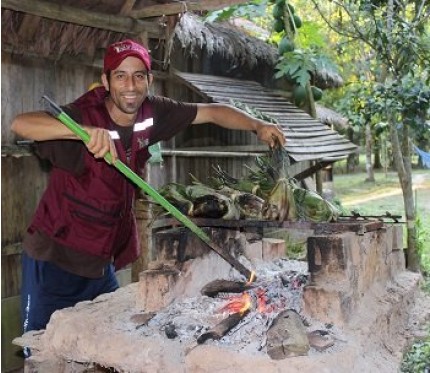
3-Day Jungle Tour (Mashaquipe Ecolodge)
This is our 3 day jungle tour operated by Mashaquipe (Madidi Nature & Culture Program). Visit Madidi National Park on a certified eco-tour and see the wonders of the Amazon rainforest. We work with "green action" certified operator Mashaquipe to offer quality eco-tours in Madidi. Upgrade to private cabins available.

6-Day Jungle & Pampas Tour (Mashaquipe Ecolodge)
This is our jungle & pampas 6 day combo tour operated by Mashaquipe (Jaguar and Anaconda Program). Visit the fascinating Madidi National park Jungle and the animal rich pampas on a certified eco-tour and see the wonders of the Amazon rainforest. We work with "green action" certified operator Mashaquipe to offer quality eco-tours in Madidi and in the Yacuma pampas. Accommodation in dorms or private cabins with shared bathroom in the jungle and private bathroom in the pampas.

3-Day Pampas Tour (Mashaquipe Ecolodge)
This is our 3 day pampas option operated by Mashaquipe. Visit the animal rich pampas on a certified eco-tour and see the wonders of the Amazon rainforest. We work with "green action" certified operator Mashaquipe to offer quality eco-tours in the Yacuma pampas. Upgrade to private single/double/triple rooms available.
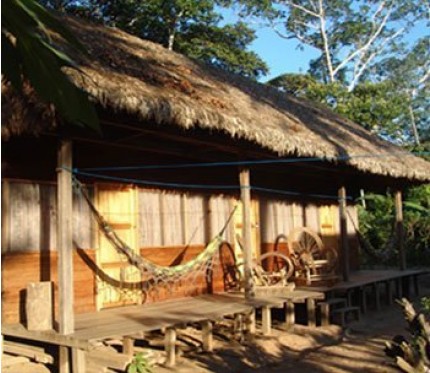
3-Day Jungle Tour (Bala Tours Ecolodge)
This is our 3 day jungle tour operated by Bala Tours. The Ecolodge "El Tucuaral" is located in the world famous Madidi National Park near to Rurrenabaque and is owned and operated by our partner Bala Tours. This tour provides quality English-speaking guides, accommodations and services at a good value price - highly recommended.


3-Day Jungle Tour (Madidi Jungle Ecolodge)
This is our 3 day jungle tour operated by Madidi Jungle Ecolodge (Tareche Program). We have chosen to work with the operator Madidi Jungle Ecolodge for these tours as they offer a high quality service. This is a new venture of Community Ecotourism totally created and managed by indigenous families from San Jose de Uchupiamonas. English-speaking guide for the tour.
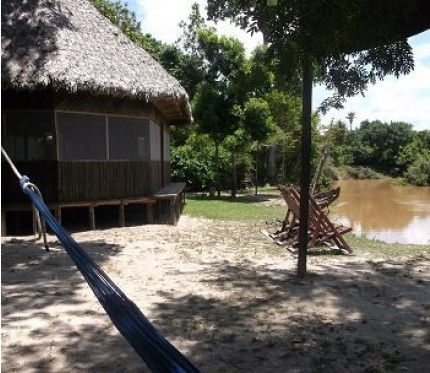
4-Day Jungle & Pampas Tour (Mashaquipe Ecolodge)
This is our jungle & pampas 4 day combo tour operated by Mashaquipe (Macaws & Caimans Program). Visit the fascinating Madidi National Park and the animal-rich pampas on a certified eco-tour and see the wonders of the Amazon rainforest. We work with "green action" certified operator Mashaquipe to offer quality eco-tours in Madidi and in the Santa Rosa del Yacuma pampas. Upgrade to private cabins with shared bathroom in the jungle and private bathroom in the pampas available.

4-Day Jungle Tour (Bala Tours Ecolodge)
This is our 4 day jungle tour operated by Bala Tours. The Ecolodge "El Tucuaral" is located in the world famous Madidi National Park near to Rurrenabaque and is owned and operated by our partner Bala Tours. This tour provides quality English-speaking guides, accommodations and services at a good value price - highly recommended.
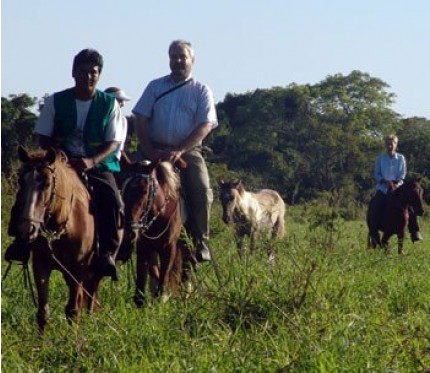
4-Day Pampas Tour (Bala Tours Ecolodge)
This is our 4 day pampas tour operated by Bala Tours. Carocoles Lodge is located in the wildlife rich Pampas area near to Rurrenabaque. This tour provides quality English speaking guides, accommodations and services at a good value price. Run by our partner agency Bala Tours this is a good value recommended option. Includes horseriding.
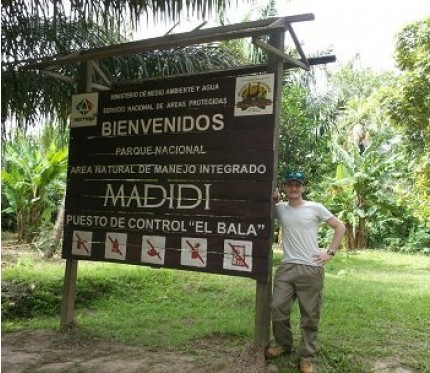
4-Day Jungle Tour (Madidi Jungle Ecolodge)
This is our 4 day jungle tour operated by Madidi Jungle Ecolodge (Wabu Program). We have chosen to work with the operator Madidi Jungle Ecolodge for these tours as they offer a high quality service. Madidi Jungle Ecolodge is a new venture of Community Ecotourism totally created and managed by indigenous families from San Jose de Uchupiamonas. English-speaking guide for the tour.
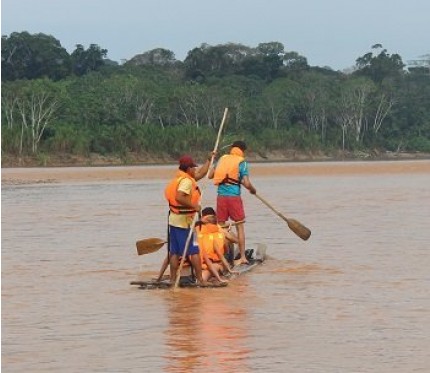
4-Day Jungle Tour (Mashaquipe Ecolodge)
This is our 4 day jungle tour operated by Mashaquipe (Madidi Magical Tour). Visit Madidi National Park on a certified eco-tour and see the wonders of the Amazon rainforest. We work with "green action" certified operator Mashaquipe to offer quality eco-tours in Madidi. Upgrade to private cabins available.

5-Day Jungle & Pampas Tour (Mashaquipe Ecolodge)
This is our jungle & pampas 5 day combo tour operated by Mashaquipe (Wabu & Dolphin Program). Visit the fascinating Madidi National Park and the animal-rich pampas on a certified eco-tour and see the wonders of the Amazon rainforest. We work with "green action" certified operator Mashaquipe to offer quality eco-tours in Madidi and in the Santa Rosa del Yacuma pampas. Upgrade to private cabins with shared bathroom in the jungle and private bathroom in the pampas available.

3-Day Pampas Tour (Bala Tours Ecolodge)
This is our 3 day pampas tour operated by Bala Tours. Carocoles Lodge is located in the wildlife rich Pampas area near to Rurrenabaque. This tour provides quality English speaking guides, accommodations and services at a good value price. Run by our partner agency Bala Tours this is a good value recommended option.

3-Day Jungle Tour (Chalalan Ecolodge)
This is our 3-day jungle tour at the Chalalan Ecolodge (Jochi Program). Chalalan is an award-winning community-owned ecolodge. Tours start in Rurrenabaque, Bolivia (transport to Rurrenabaque is not included but available separately) and range from 3 days/ 2 nights and more. During the busy season you should book well in advance as these tours book up fast!
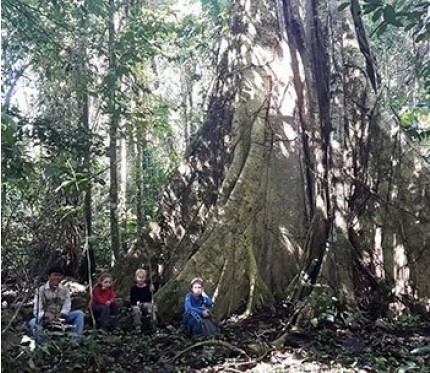
5-Day Jungle Tour (Madidi Jungle Ecolodge)
This is our 5 day jungle tour operated by Madidi Jungle Ecolodge (Biwa Program). We have chosen to work with the operator Madidi Jungle Ecolodge for these tours as they offer a high quality service. This is a new venture of Community Ecotourism totally created and managed by indigenous families from San Jose de Uchupiamonas. English-speaking guide for the tour.

5-Day Jungle & Pampas (Bala Tours Ecolodge)
This is our 5 day jungle and pampas combo tour operated by Bala Tours. This is a combo tour of pampas and jungle in Carocoles and El Tucuaral Lodges. This tour provides quality English-speaking guides, accommodations and services at a good value price. It is a great way to fit both the jungle and pampas into the same tour without having to stay in Rurrenabaque for a night in between.

2-Day Jungle Tour (Mashaquipe Ecolodge)
This is our 2 day jungle tour operated by Mashaquipe. Visit the fascinating Madidi National Park on a certified eco-tour and see the wonders of the Amazon rainforest. We work with the "green action" certified operator Mashaquipe to offer quality eco-tours in Madidi. Upgrade to private cabins available.
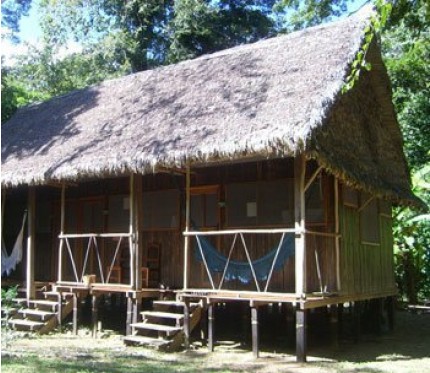
5-Day Jungle Tour (Chalalan Ecolodge)
This is our 5-day jungle tour at the Chalalan Ecolodge (Capibara Program). Chalalan is an award-winning community-owned ecolodge. Tours start in Rurrenabaque, Bolivia (transport to Rurre is not included but available separately) and range from 3 days/ 2 nights and more. During the busy season you should book well in advance as these tours book up fast!
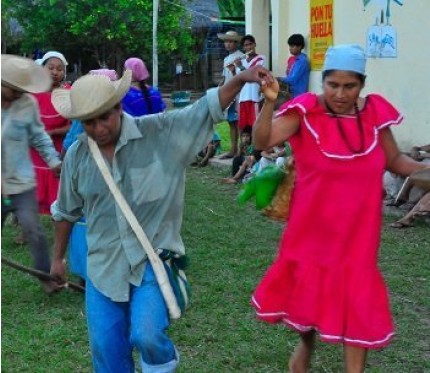
2-Day Community Tour (San Miguel del Bala)
In this two day tour you will get to visit the Tacana community of San Miguel del Bala and learn about their culture and traditions. You will see first hand the community lifestyle and visit the surrounding rainforest with a knowledgeble local guide. You will learn about traditional hunting techiques, forest medicines, visit a jungle waterfall and can take a jungle hike to a canyon. You will also see how this community-owned lodge benefits from the tourism project buy funding various project with the village.

3-Day Community Jungle (San Miguel del Bala)
In this three day tour you will get to visit the Tacana community of San Miguel del Bala and learn about their culture and traditions plus also visit the world famous Madidi National Park and spend your second night in an ecolodge there. You will see first hand the community lifestyle and visit the surrounding rainforest with a knowledgeble local guide. You will learn about traditional hunting techniques, forest medicines, visit a jungle waterfall and can take a jungle hike to a canyon.

2-Day Jungle Tour (Bala Tours Ecolodge)
This is our 2 day jungle tour operated by Bala Tours. The ecolodge "El Tucuaral" is located in the world famous Madidi National Park near to Rurrenabaque and is owned and operated by our partner Bala Tours. This tour provides quality English speaking guides, accommodations and services at a good value price - highly recommended.
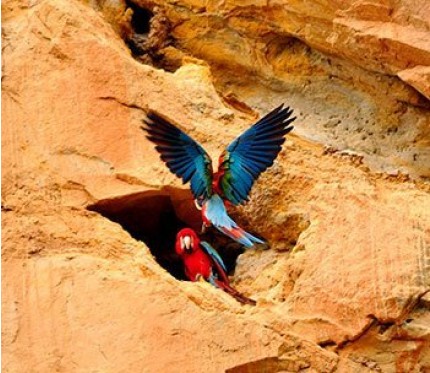
2-Day Jungle Tour (Madidi Jungle Ecolodge)
This is our 2 day jungle tour operated by Madidi Jungle Ecolodge (Mapajo Program). We have chosen to work with the operator Madidi Jungle Ecolodge for these tours as they offer a high quality service. This is a new venture of Community Ecotourism totally created and managed by indigenous families from San Jose de Uchupiamonas. English-speaking guide for the tour.
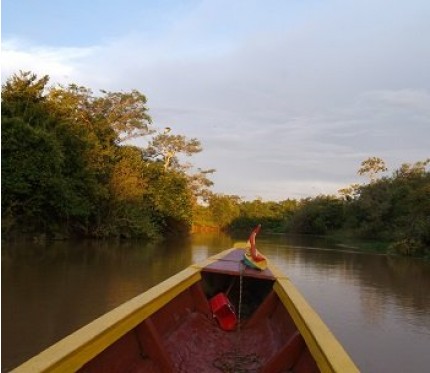
2-Day Pampas Tour (Mashaquipe Ecolodge)
This is our 2-day pampas option operated by Mashaquipe. Visit the animal rich pampas on a certified eco-tour and see the wonders of the Amazon rainforest. We work with "green action" certified operator Mashaquipe to offer quality eco-tours in the Yacuma pampas. Upgrade to private cabins with private bathrooms available.

6-Day Jungle Tour (Mashaquipe Ecolodge)
This is our 6 day jungle tour operated by Mashaquipe (Challenging the Spirits of the Forest Program). Visit Madidi National Park on a certified eco-tour and see the wonders of the Amazon rainforest. We work with "green action" certified operator Mashaquipe to offer quality eco-tours in Madidi. This tour is focused on trekking and you will spend 4 out of 5 nights camping.
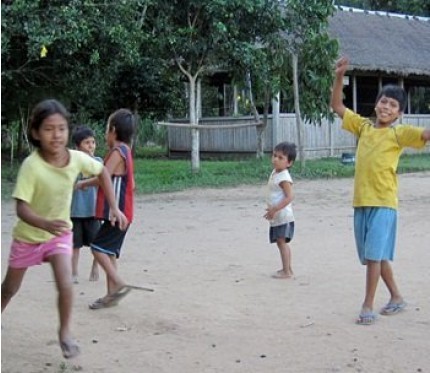
1-Day Community Tour (San Miguel del Bala)
In this one day tour you will get to visit the Tacana community of San Miguel del Bala and learn about their culture and traditions. You will see first hand the community lifestyle and visit the surrounding rainforest with a knowledgeble local guide. You will also have a delicious lunch cooked by the skilled local cooks. You will be able to choose two activities of your choice.
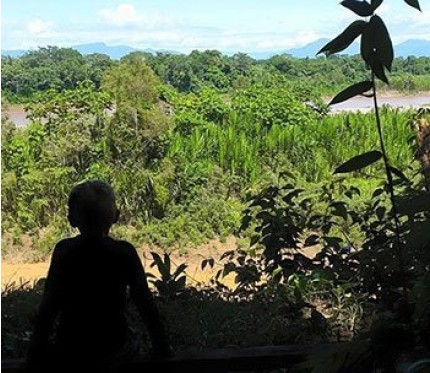
Full Day Jungle Tour (Madidi Jungle Ecolodge)
This is our 1 day jungle tour operated by Madidi Jungle Ecolodge (Cullpana Program). We have chosen to work with the operator Madidi Jungle Ecolodge for these tours as they offer a high quality service. This is a new venture of Community Ecotourism totally created and managed by indigenous families from San José de Uchupiamonas. English-speaking guide for the tour.

4-Day Community Jungle (San Miguel del Bala)
In this four day tour you will get to visit the Tacana community of San Miguel del Bala and learn about their culture and traditions plus also visit the world famous Madidi National Park and spend your second night in an ecolodge there. You will see first hand the community lifestyle and visit the surrounding rainforest with a knowledgeble local guide. You will learn about traditional hunting techniques, forest medicines, visit a jungle waterfall and can take a jungle hike to a canyon. You will also see how this community owned lodge benefits from the tourism project buy funding various project with the village .

4-Day Jungle Tour (Chalalan Ecolodge)
This is our 4-day jungle tour at the Chalalan Ecolodge (Pecari Program). Chalalan is an award-winning community-owned ecolodge. Tours start in Rurrenabaque, Bolivia (transport to Rurre is not included but available separately) and range from 3 days/ 2 nights and more. During the busy season you should book well in advance as these tours book up fast!
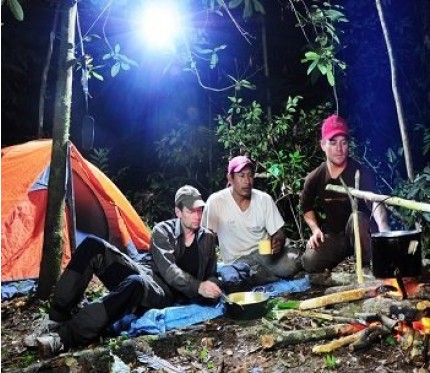
5-Day Jungle Tour (Mashaquipe Ecolodge)
This is our 5 day jungle tour operated by Mashaquipe (Circuit of the Jungle). Visit Madidi National Park on a certified eco-tour and see the wonders of the Amazon rainforest. We work with "green action" certified operator Mashaquipe to offer quality eco-tours in Madidi. This tour is focused on trekking and you will spend 3 out of 4 nights camping.
The Ungraceful Guide | Budget Travel Guides

Bolivia: Our Wild Amazon Pampas Tour in Rurrenabaque
- December 24, 2017
Our first trip to the Amazon jungle in Peru, where we lived alongside the Shipibo tribe in the small village of San Francisco de Yarinacocha, had converted us to the new age Tarzan and Jane. We were addicted to jungle life, and we wanted more.
Eager to return, but this time to discover and observe more of the Amazonian wildlife, Bolivia’s Rurrenabaque and its popular ‘Pampas Wildlife Tours’ seemed to tick all boxes. But after much research to include tagged Instagram photos, we were a little sceptical.
Not to be in any way judgemental and certainly not to offend, viewing photos of tourists hugging sloths and holding pythons wasn’t what we considered a “wildlife tour”.
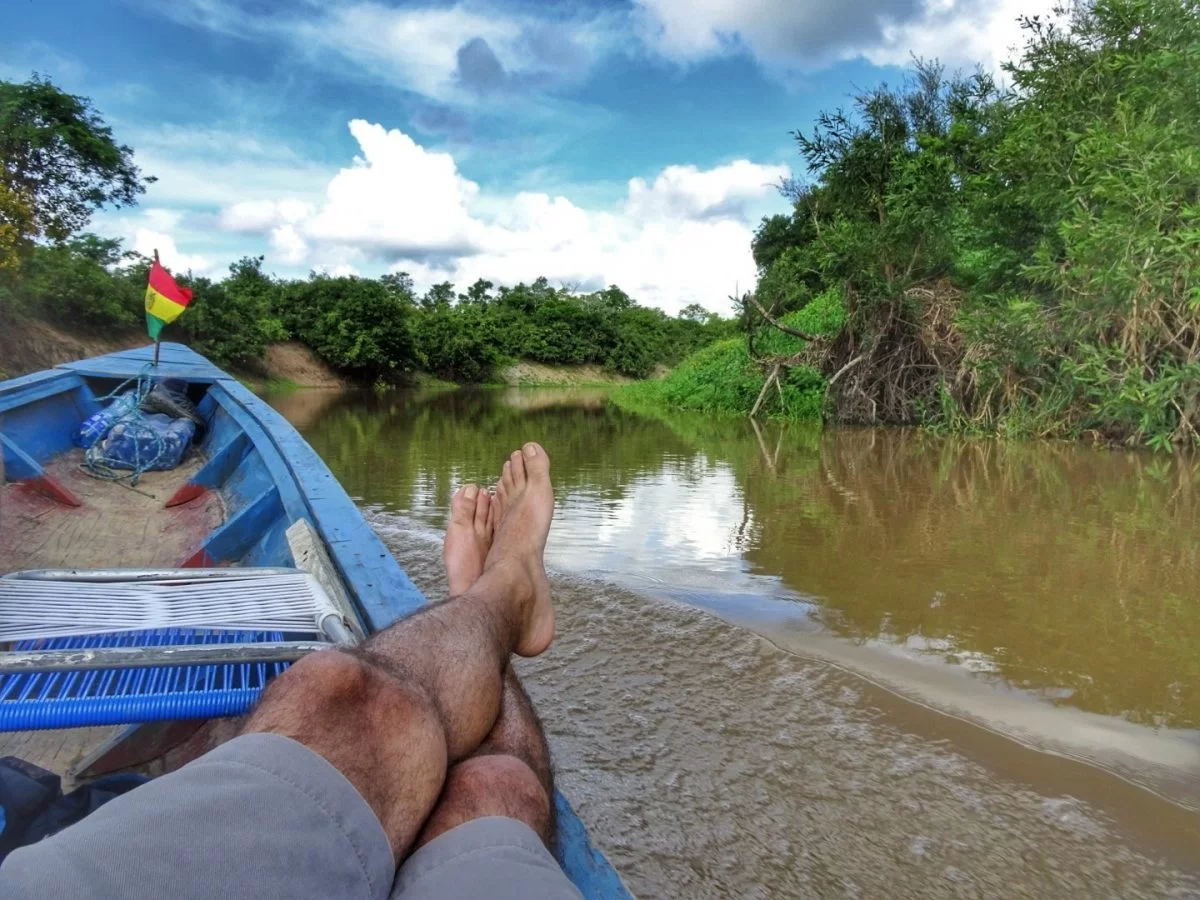
We feared that any tour we booked would thrust us into an inhumane world where, like always, humans disrespect and disturb the surroundings for selfish reasons. Whether it is in order to get that perfect selfie, touch a wild animal or act as if they’re in a scene from The Jungle Book, it’s wrong. So wrong.
So we continued our research with the hope of finding and then avoiding the unethical tour agencies. We continued to read the reviews, investigate the online stories and scrutinise the photos. We then went door to door with the tour agencies, always weary and extremely distrusting.
Before we share our findings, we must ask our fellow backpackers and adventurers to please, please, PLEASE respect the wildlife. If you really do seek that selfie, by all means, visit a zoo or an animal sanctuary that allows such carry-on. But we beg you, do not enter the Amazon, intrude on its life and ruin it for the observers and animal lovers. Because it has to be said, if you truly are an animal lover, you will be in full agreement with us here.
And folks, this includes feeding. Don’t encourage the wildlife to run towards tourists to be fed, don’t ruin their ability to fend for themselves and do not meddle with the circle of life (it does, after all, move us all…)
Table of Contents
From la paz to rurrenabaque:, tucanes de rurre hotel:, accommodation claryvel:, what to expect: day 1, what to expect: day 2, what to expect: day 3, what to prepare:, our pampas experience:.
Although, according to our research, the only way to reach Rurrenabaque is starting from La Paz, the good news is that there are a number of methods to travel to Rurrenabaque.
With many opting in for a 1 hour flight via a 15 seater plane (check JetCost.com ) with prices around €150 return, others delve deep into the pockets to fork out on the pricey bus and boat option.
But budgeteers may want to join the locals on a 18+ hour public bus that travels partially on Bolivia’s Death Road. The journey was enjoyable, we got our cheap thrills and experienced the infamous road that takes the lives of over 200 people per year.
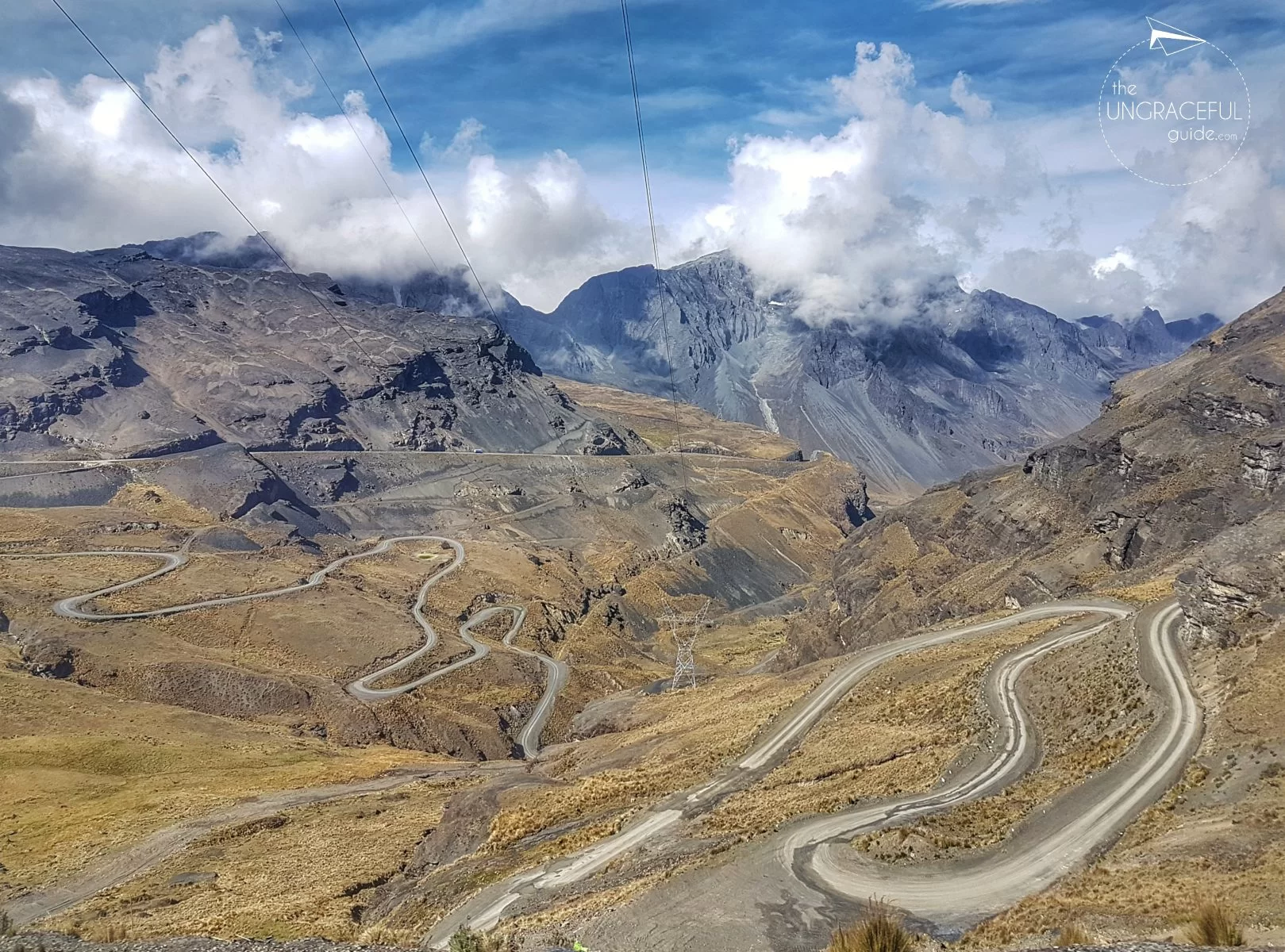
Buses to the jungle leave from Terminal Provisional Minass – Yungas, a little outside the centre of Villa Fatima in La Paz.
Collectivos to the above bus terminal pass by San Fran Plaza. Take any that have ‘Villa Fatima’ displayed in the window. The 30 minute drive costs only 2B (€0.25).
When you arrive, ignore any taxis and tours who may mislead you by providing inaccurate information, and instead cross the open-aired terminal towards the buses all going to ‘La Selva’.
We took the 2.30pm bus with Trans Total for 60B (€7.50). They might quote 80B (€10) but do not pay more than 60B! Although the bus looked like it was about to fall apart, the service was decent, left and arrived on time, had reclining seats, lots of legroom but no toilet.
There are other companies that also journey to Rurrenabaque but leave early in the morning. And to be honest, the earlier departure the better as it ensures you can enjoy Death Road in daylight.
We wrote a quick blog with more details and a little insight to our experience. Spoiler: we loved it, had no scary stories and arrived on time.
Enjoy a read here .
Accommodation in Rurrenabaque:
Arriving safe and sound, let’s talk about some accommodation options. We stayed in two different hostels while in Rurrenabaque, spending a night in each of the two budget-friendly options.
Extremely happy with this accommodation, the comfortable private room with two double beds and a shared bathroom costs 35B (€4.40) per person.
Located on the corner of Calle Bolivar, it includes a free breakfast of coffee, juice, toast and spread.
Although it doesn’t have a kitchen (not many hostels in Rurrenabaque do) it does have a preparation area with delph and a fridge to store food.
The fast Wi-Fi, hot power showers and chilled outdoor common area fitted with hammocks are also all appealing facilities. On top of all that the hotel offers free luggage storage, should you need it.
If the above is fully booked, we also stayed at this basic lodging found on Calle Beni, next door to the well-known ‘Garfield Laundry’ (if lost, just ask for the lavandería).
We paid 25B (€3) per person for a bed in a 4-bedroom dorm which we shared with our newfound friend Henrik, a young German traveller whom we met on the morning of our arrival to Rurrenabaque, at a local French bakery (more on that later!).
There is no kitchen and Wi-Fi isn’t great, but arriving into the tropical town at 8 am, our tired selves were not too fussy and sure it was only for one night while we scoured the tour agencies. So if you’re looking for a very cheap place to sleep, this is it.
However, before we headed into the jungle we did avail of their affordable laundry service at only 8B (€1) per kilo.
Our Tour Choice:
Before booking a tour, there are a few things we discovered:
- All tour agencies offer the same itinerary, with each having its own accommodation options located alongside the Amazon River.
- Tour agencies have an agreement where no company should charge less than 1,200B (€150) per person as a rule of fair competition. However some won’t abide and this is OK, especially in low season. This agreement only applies in Rurrenabaque hence why sometimes, it’s cheaper to book your tour in advance in La Paz. Sometimes.
- Be aware of who you book through as some of the smaller agencies are subcontractors for the bigger fish, mostly Dolphin Travel (no pun intended) and this is a company we would steer clear of.
- It’s all about the guide! Although the priority is researching the company, take note of reviews about the guide. Some guides show little care towards the wild thus are willing to disturb it in order to please clients. Not cool guides, not cool at all.
- There is an additional 150B (€19) park entry fee, no tour includes this.
- There is an extra cost if you prefer to have a private room.
We met Pepe from Tour Amazonico in a local French bakery, and had then enquired with a number of locals, including the bakery owner, if the company was a reputable one.
After getting the thumbs up, we went to ask for a price and interrogate. Pepe’s charm, good English and low price was certainly appealing, but of course we probed into their ethics and with hope we would be taken seriously, we stated a number of times that not only were we travel writers but also worked closely with a number of organisations and thus we have a high moral standard.
Convinced of Pepe’s promises, we accepted their two nights and three day tour to include transport, three meals per day and all activities from piranha fishing to pink dolphin spotting for 750B (€94) per person, not including the 150B (€19) park entrance fee.
The most important suggestion we can make when booking with Amazonico is to request Juan Carlos as the guide. Honestly, he made our trip.
JC, as we nicknamed him, grew up in the Pampas and so his whole life he has been surrounded by the wildlife we pay so much to see. The Amazon is his home, the animals his neighbours and his love for it all is clear to see. His literally is the real life Mowgli. Based on his attitude, passion and knowledge, we genuinely wouldn’t recommend any other guide.

The minute we met JC, we explained our fears and dislikes of hearing the touchy feely tales. His disgust matched ours and made it abundantly clear that under no circumstances do we disturb the Amazonian territory and its inhabitants. Covered in scars, being an inquisitive child growing up, JC has been bitten by pretty much everything that lives in the Amazon; caiman, alligator, snakes, you name it. We’re telling you… if Tarzan and Mowgli were to, in some strange scientific breakthrough, have a lovechild it would be JC.
You can find the Amazonico offices on Calle Avaroa, next to Fluvial Tours and across from The French Bakery (I swear I’m getting to that!).
Head for the Mercado Central, and with the market on your left stay straight for two blocks.
Note : Amazonico and Fluvial Tours are, in ways, affiliated as they use the same accomodation site but have different guides. The tours are maximum 7 people, if even, and although the two are associated we only recommend Amazonico.
- 9am departure time from Rurrenabaque, followed by a three hour drive to the entrance of the Amazon, with a lunch stop midway.
- Meet the tour guide and board a long boat for a three hour ride up the Amazon river towards the accommodation. Spotting wildlife along the way

- Arrive, settle in and have a small snack-like lunch before reboarding the boat to go watch the sunset from a local family’s farmland.
- Alligator night spotting, using headlamps and then home for a buffet dinner
- Breakfast, early anaconda hunting (not literally hunting!) and return for lunch.
- Back on the boat to find pink dolphins with an option to swim with them. Guide should also bring you to find sloths. Back to accomodation for buffet dinner.
- Early at 5am start to catch the sunrise.
- Piranha fishing before returning for a final lunch which is whatever you catch.
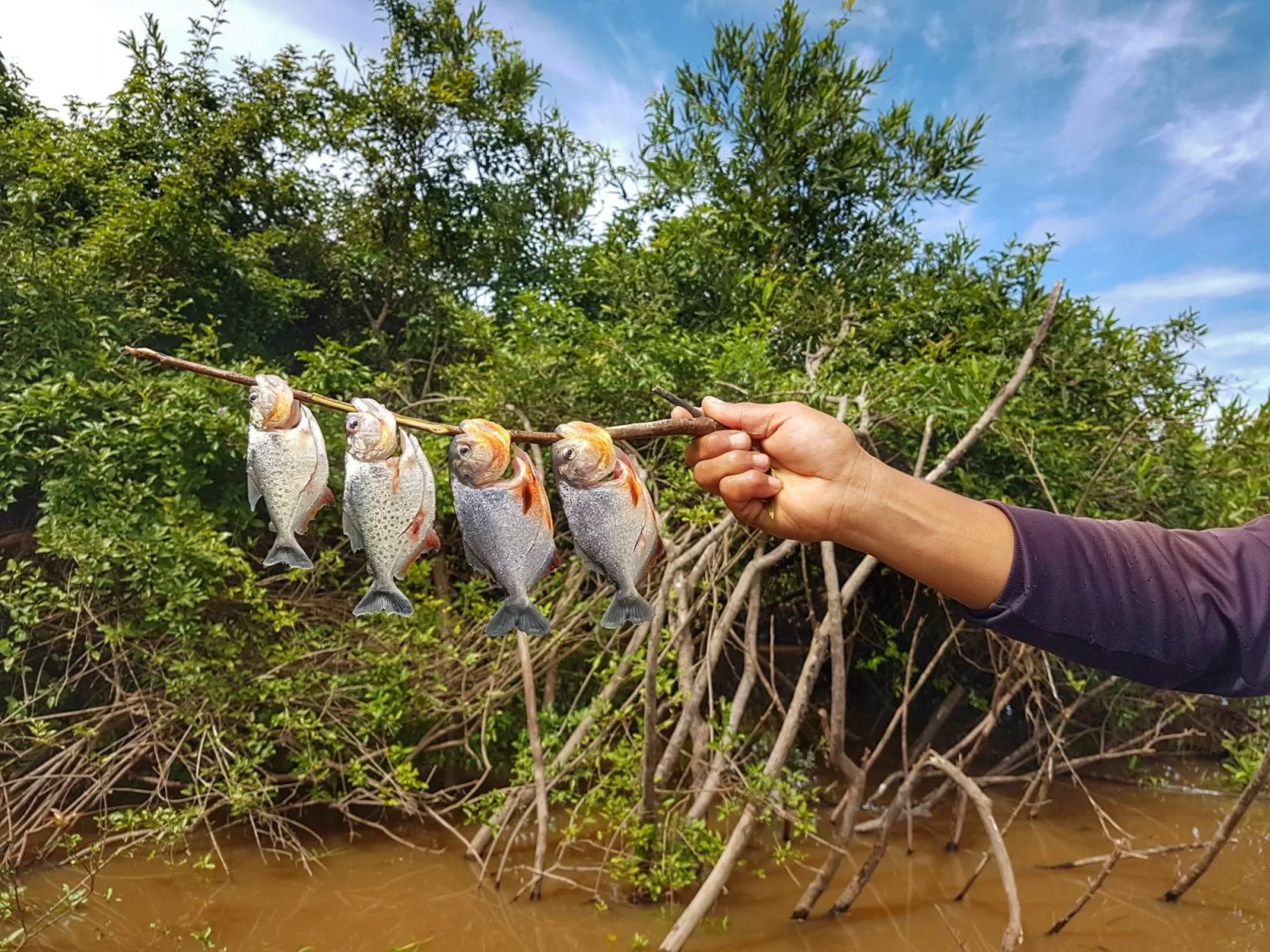
- Pack and prepare to return to Rurrenabaque.
First of all, prepare and pack a light bag the night before. There really is no need to bring everything you own.
Here are a few suggestions as to what to bring:
We visited in early November and although the weather was hot and stuffy, in both Rurrenabaque and in the Pampas, we had a day of heavy hurtin’ rain showers. So if like us you lack decent rain gear , we picked up some high quality ponchos in the local Rurrenabaque market for 25B (€3). Not only did it keep us dry but it helped fend off the vicious mozzies whose vampire powers were useless against our new rain capes.
Comfortable hiking shoes are a must (wellies are supplied when Anaconda hunting – again, not actual hunting – obviously!) but do bring less sweaty footwear such as flip flops for when you’re hanging out in the cabins or on the boat.
Swimwear is ideal, especially for those who wish to take a dip in the Amazon river along with the pink dolphins. Something we didn’t do, but yet we still enjoyed a bikini and shorts day on the motorboat.
Do not forget to pack long sleeves and trousers . As soon as the sun sets we would change into jeans or leggings to save our sunkissed skin from the itchy wrath of the ferocious jungle mosquitoes. Leggings won’t exactly help since they’re tight fitting but my wardrobe doesn’t exactly have much variety and it was better than bare legs! If it helps, and you have some (unlike my inner goth!) wear bright colour clothes as dark clothes attract mozzies more. The little blood-sucking feckers.
Suncream , sun block, sun hat, anything with U.V and anything with a bit of shield or shade. The sun is strong, and you are never undercover. You will be burned and you will suffer some stinging skin. Prevent that from happening as much as you can.
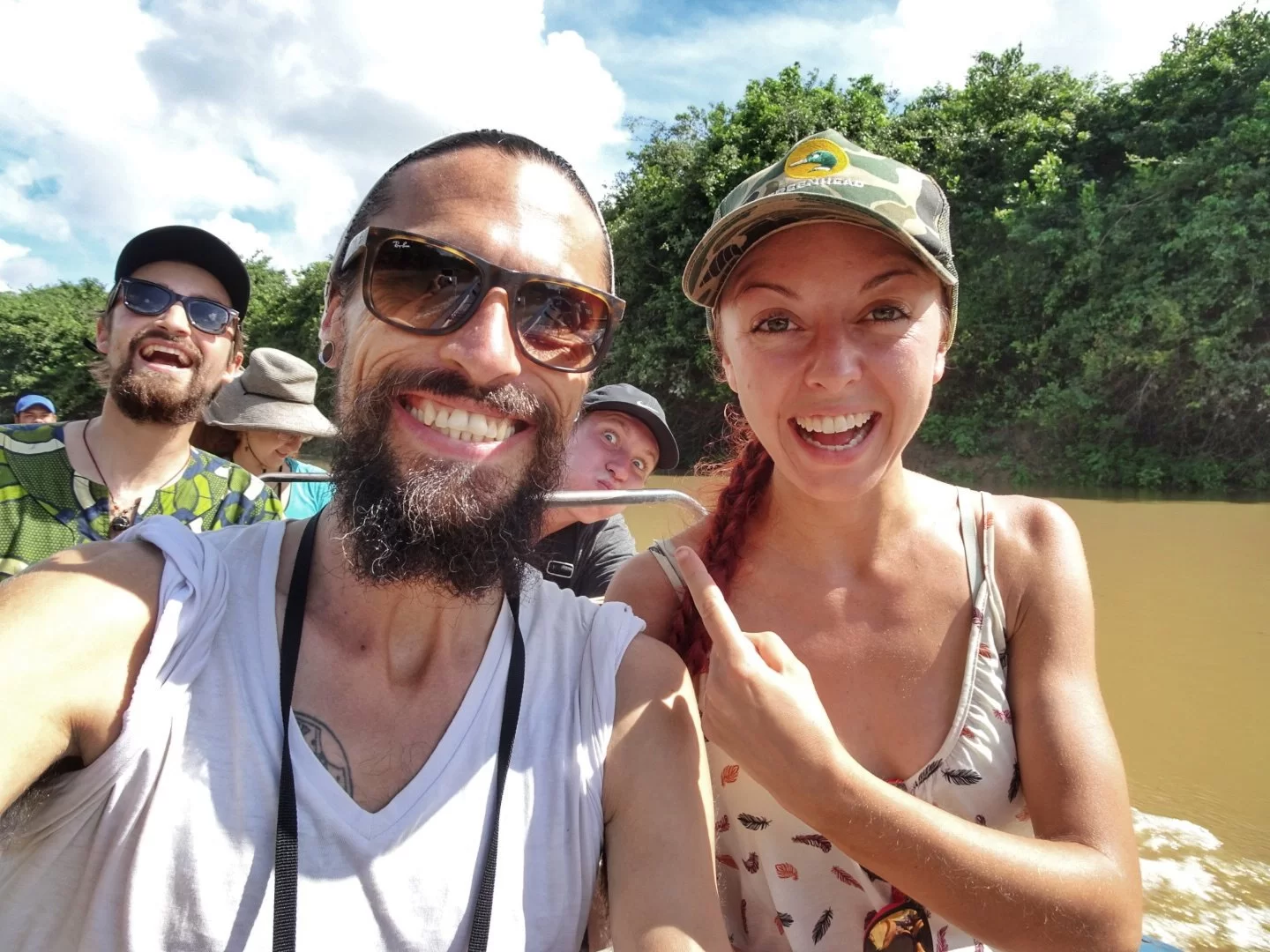
It goes without saying but bring mozzie spray , the DEET kind. The minimum 10% DEET kind.
We were both unfortunate to be struck with a dose of mid-Pampas food poisoning, yep… lucky us (we think it was Rurrenabaque’s finest fried chicken). The worst part was that with vomiting, comes the shits. So not only do we wish we brought our own toilet roll , we also regretted not bringing some form of medicine. Dioralyte, pepto bismol-ish tablets, anything really. Be a Mammy, be prepared.
The electricity at the wooden lodging is limited, power is supplied by a generator that kicks in after dark. The plug sockets will be ransacked, so bring a power bank . A fully charged one.
As you can imagine, it gets quite dark in the jungle. If you have a torch or a headlamp bring one (not just the one on your phone as this will drain your battery!). If you don’t have one, mention this to the tour agency who will supply one for you. Amazonico did! It will come in handy, and is needed for spotting the glowing eyes of the river-hiding caimans.
Bringing all our bags, we arrived at the Amazonico offices at 8.30am. Pepe stored our backpacks and anything of importance in a secure room in his house, and declared full responsibility for all the stored items.
We loaded the 4×4 and by 9am, we began the 3 hour drive towards the Santa Cruz park aka the gateway to the Amazon. Myself, Luke and Henrik were joined by Eden, Justyna and Marcell, and the bonding began. Two hours in, we stopped for some lunch, a buffet of rice, spaghetti, salad, mince meat and a drink.

An hour later, after paying the 150B (€19) park entrance fee, we helped unload the car, met our jungle warrior JC (who speaks really good Spanglish). People prefer perfectly fluent English guides but you can look at it as a way of practising your Spanish while helping him with his English. Together, we loaded and then boarded the long slender motorboat, fully fitted with wired garden chairs. Comfy!

We spent the next three hours gently floating our way up the Amazon where eagle eye JC called out as he spotted a number of wildlife from specific Amazon birds of all kinds to Capybaras, the biggest rodent in the world and hundreds of stationed and swimming turtles.
Laughter broke as we spotted a lonely capybara humping a small leaf plant, followed by exciting outbreaks of squeaking as monkeys flew across the trees overhead.
It should be said that we stayed at a safe distance to merely observe all the animals.

Further along the river, a small family of squirrel monkeys, the smallest type of monkey in the Amazon, approached the boat. Amazed, it wasn’t until JC explained that this is due to the thousands of tourists and guides who feed them. Because of this malpractice, anytime the little black and yellow cuties hear the motor, they assume it’s feeding time.
So here we are preaching again, if this does happen on your visit, please don’t encourage it and become part of the problem.
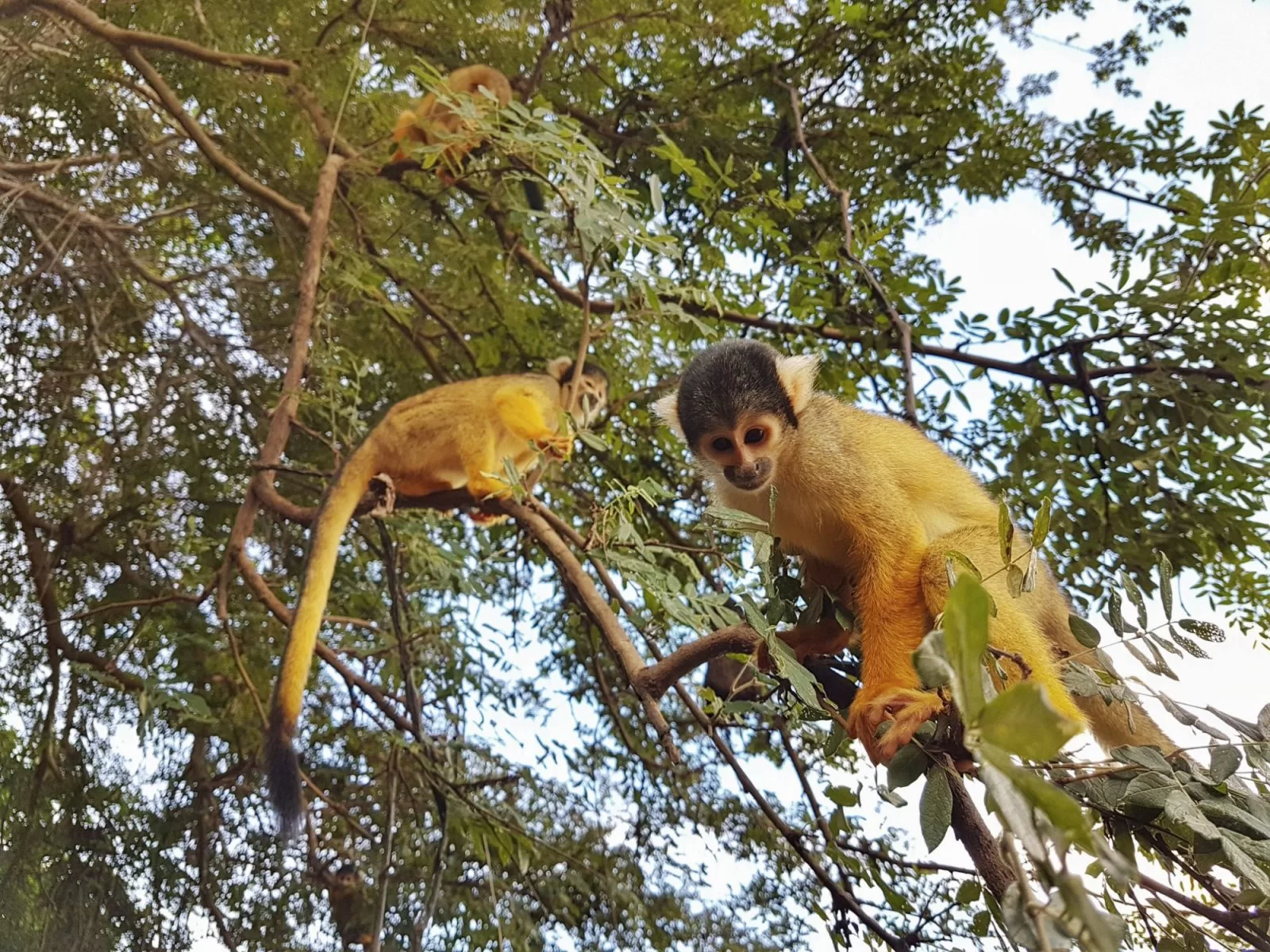
They’re nosey and inquisitive specimens so yes enjoy them and their close presence as there’s nothing you can do if they do approach expecting food (in fact do just that, nothing!). They will come as close as possible and might even jump on your head! If your guide is wise he will tell you not to move and let them be as they were.
We did get a good laugh when one of them decided to urinate on our other fellow German passenger Alex, so we took the hint and moved on.
Settling into our home for the next two nights, the cabins were basic but beautiful. All handbuilt, sitting on stilts and connected by wooden bridges and platforms, myself and Luke were lucky to be placed into our own private room even though we didn’t request one (double rooms are that little more expensive).
The private rooms are small but have private bathrooms, while the large dorm rooms have shared bathrooms. All beds include a mozzie net.
We enjoyed some light lunch; juice, biscuits and popcorn before heading back on the boat for a 15 minute ride to catch a sunset.
Remember when we said to bring a torch? This is where it comes in handy! En route back home, as darkness hits and the bats take over, JC encourages us to shine our lights towards the riverbank. All of sudden the darkness turned into a starry-like sky. Catching the eyes of the caimans, their still balls of vision shone bright, and it wasn’t until we did this do you realise just how many were surrounding us. It was magical.

Lights off, the trees above sparkled as the fireflies were in full force. It’s so beautiful, that even though we wanted to see the watchful river eyes, we sat in awe, enjoying the darkness in complete silence as we each took a moment to absorb a slice of the jungle we never thought we would experience.
Homeward bound, it was time for dinner. A beautifully laid table with bread, pasta, rice, mince and salad served with water and juice.
This was when my nausea hit. Over 9 months travelling and not once were either of us hit with any dose of food poisoning. And the one time I suffer, it’s in the middle of the jungle. Murphy, you bastard. I hit the hay early and spent the night visiting the bathroom. Thanking my lucky firefly stars that we were placed in a double room.
The following morning we woke to the hammering rain, or maybe torrential downpour is more appropriate. Despite the gloomy morning, the group headed out to try to spot some anacondas, an unlikely mission considering, like me, these reptiles too prefer to hide from the rain.

So while my head remained firmly in the toilet, Luke took one for the team; stepping into the supplied wellies and draped in his new rain cape, off he went to scout for the large slimy serpents.
Dragging their feet through knee high swamps, and clambering through sky high long grass, moods were a little low as the rain bounced from head to shoulder. The wellies grew heavier with every step, but alas JC managed to keep spirits alive.
He stopped to share more knowledge of every moving critter, and when he noticed that Eden was carrying a large bottle of water, he stopped to make a bottle carrier backpack using only vines. Bear Grylls, who?!
Another unusual scene, the group gathered around a large wasp nest where they enjoyed some tree cover while watching the wasps literally clear the rain water from the hive, on their backs! Although they do require some water to survive (don’t we all!), the heavy rain and overflow created this buzzing frenzy. An incredible sight, one which you can see throughout our snapchat video below.
A slim to none chance of finding the popular python, the group were surprised to hear Henrik shout with success. How he managed to spot the very tiny baby anaconda that was snacking on a frog, leads us to believe he has ultimate 20/20 vision. Go on the German!
Unfortunately for Luke and the gang, a nearby Fluvial tour guide also heard the surprised shouts and rushed to the scene. To show off to his group (because why else would you feel the need to do this?!) he attempted to pick up the tiny anaconda, yet failed to not only disturb its lunch but lose it entirely, ruining it for everyone.
This is when JC intervened, gave the guide a bollocking and created a welcome scene, or so I was told.
Back home, I witnessed my drowned friends pour puddles of rain water from their wellies and strip off their new layer of skin before all rushing to lunch. Meanwhile, Luke popped in to check on my weak, sick self whose body finally gave up heaving. He brought me a banana and a piece of dry bread to nibble on and left to warm up his belly with home cooked food.
As I lay in bed exhausted, a large thud jolted my body upwards. Face to face was a small spider monkey who cheekily grabbed my banana and bread and darted for the opening above the door. Worry and amusement washed over me, and before I knew it a swarm of squirrels and even two howler monkeys started to wrestle and screech on our cabin rooftop. All attempting to steal the lucky find.
So take note guys, never bring food into your rooms!
A knock on the door, my very own Jesus came to check on me with a cup of magic in hand. JC told me he whipped together a medicinal drink that was sure to help me feel better. Staring into the cup, all I smelled was orange and all I saw were leaves and tree bark. Parched, I hurled the potion down my neck. Although it didn’t stay down long, after another puking session I fell back asleep to wake with energy, a nice change from needing to puke or poo.
JC rounded the troops for another day out on the boat, but this time we were searching for pink dolphins. Packing a plastic bag, I apologised in advance to the group who sympathetically promised to turn a blind eye should any puking commence. And if that did happen, I was technically feeding the fish. Even if I was dying, there was no bloody way I was missing the pink dolphins.

There were a pod of dolphins swimming below
You would think the swimming pinkys would be hard enough to spot but surprisingly thousands call the muggy brown river home. Now, it is less jumping up Flipper style but more poking their fins out to cause a ripple and a splash. When JC was content that a dolphin pod was close by he encouraged those feeling up to it to jump in. The water looked less pleasing than your standard river, he admitted that alligators and caimans were close but not to fear that the dolphins were king of the river. And once you don’t have an open wound, you are simply not appetising enough for the four different types of piranhas living below.
Three of the lads jumped in, while we chilled in the boat. Sick or not, I much preferred to enjoy it from a distance and didn’t want to intrude on their home. The dolphins didn’t respond, much to everyone’s disappointment and instead they swam uninterested and too distracted.

After the swim and stare, we moved on to find a sloth. Another moment where we truly believed JC has some magical powers. Eyes glued to the treetops, he succeeded (of course he did!) in finding one lazing high in the branches. And although we have seen many sloths on our adventures from Costa Rica to Colombia, it’s still always a welcomed sight. Back home for dinner, I was cured. JC and his holy water literally cured me. And while I was ready to demolish any food set in front of me, bang on Murphy’s (Law) schedule, Luke’s face drained and nausea washed over his body. Man down! Man down! So I ate for two.
Our group joined Fluvial’s group and we all hung out swapping stories, playing pool and drinking beer. Exhausted I skipped off to bed and my sick boy.
Alarm bells shook me at 5am, and I leaped out of bed to dress for a sunset. Luke deteriorating fast, it was my turn to take one for the team and join the small few of us who were willing to rise so early. Back in the boat, we floated silently as we listened to the jungle waking. Tranquillity.

Climbing up the slippy riverbank, having far too many laughs at our clumsiness; the sunrise wasn’t exactly like the perfect photos we saw, and definitely not the best I’ve witnessed. Yet the realisation that you’re standing in the Amazon watching the sunrise is hard to beat. The feeling really is indescribable. We returned and joined the lazy lumps at the breakfast table, guzzling coffee and already ready for a nap! It was D day, the day we were leaving and I wasn’t OK with that.
Our final Amazonian adventure together was, you guessed it, back on the boat! Accompanied by tender hooks and fresh cow flesh, we enjoyed a spot of piranha fishing. A survival method for the likes of JC and his family, he shared fishing techniques that were passed down generations.

The lads competed while I focused on catching something, anything! And finally, I got a bite. Delighted with myself, I jumped for joy even though it was TINY! Ignoring the giggles, I posed proudly before JC told me to throw it back in. It was just too small to eat and it still had time to recover and live (apparently). The method we used was literally a piece of string, tied to a standard fishing hook, topped with flesh. It’s quite interesting how the minute you dip it, the fish seem to nudge and elbow each other for a bite, yet they’re smart enough that it is such a challenge to actually catch them.
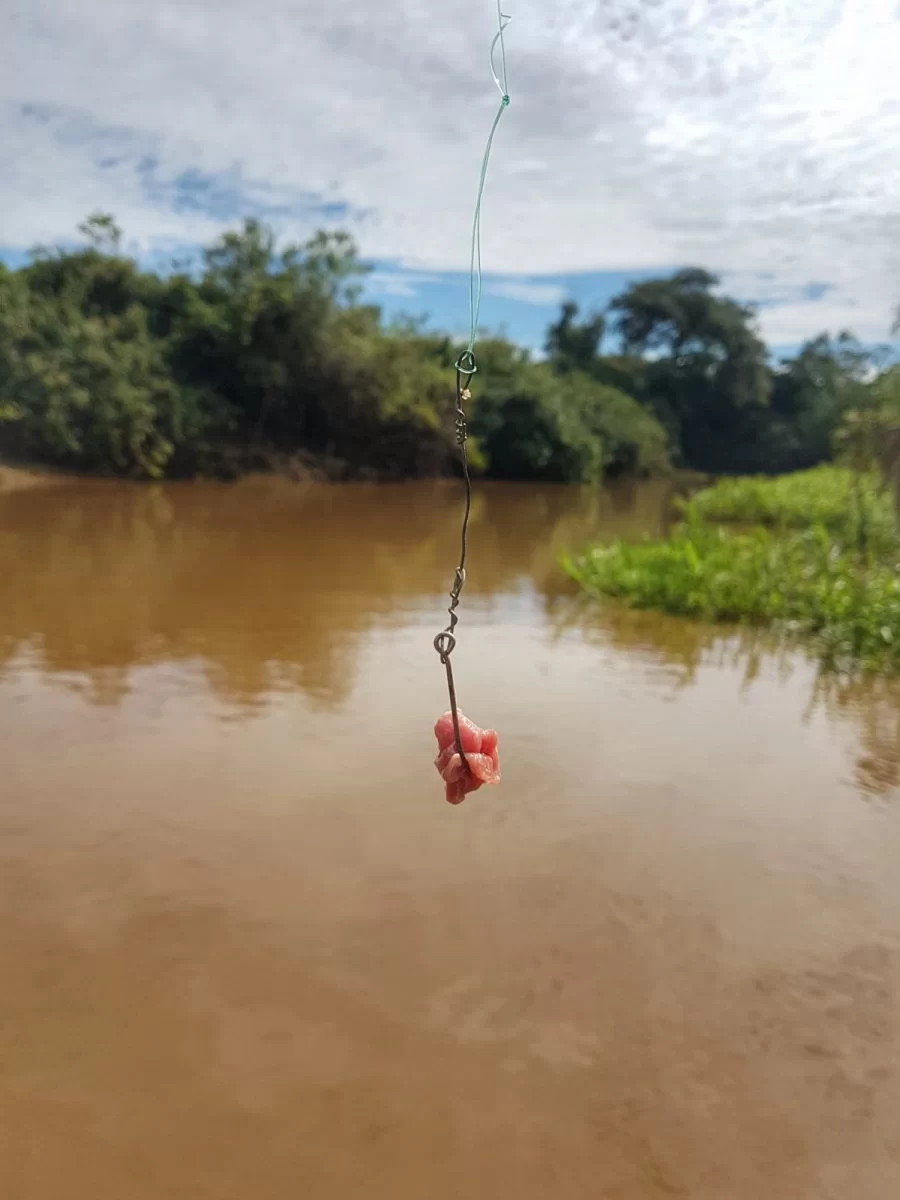
We returned with the day’s catch (thank God for the lads or no one would have been eating), handed it over to the chef and packed while we waited for lunch. In the meantime, Luke awoke to down JC’s miracle potion with the hope he would feel better enough to eat our efforts.
Having tried piranha before, also in the Amazon in Peru, let me tell you that if you have to try it – go all out and get stuck in. It’s delicious! Served with mashed potato and vegetables was the icing on the cake for me. My favourite meal on the tour.

Saddened, we made a pact to ignore Luke’s gags and agreed that his “I need to shit” safety word would be “pineapple shnell shnell” but thankfully there were no accidents.
Back on dry land, the Amazon blues hit as we all hugged JC tightly, warned the currently waiting group to mind him for us, that he was the best and climbed back into the 4×4.
The last thing I remembered was seeing a herd of cows block the road, and before I knew it I was back in the jungle. Back on our blue longboat, back laughing at Marcell’s jokes, back to where I had to 360 my head just so I didn’t miss anything. Back to one of my favourite places in the entire world. Back to the Amazon jungle….
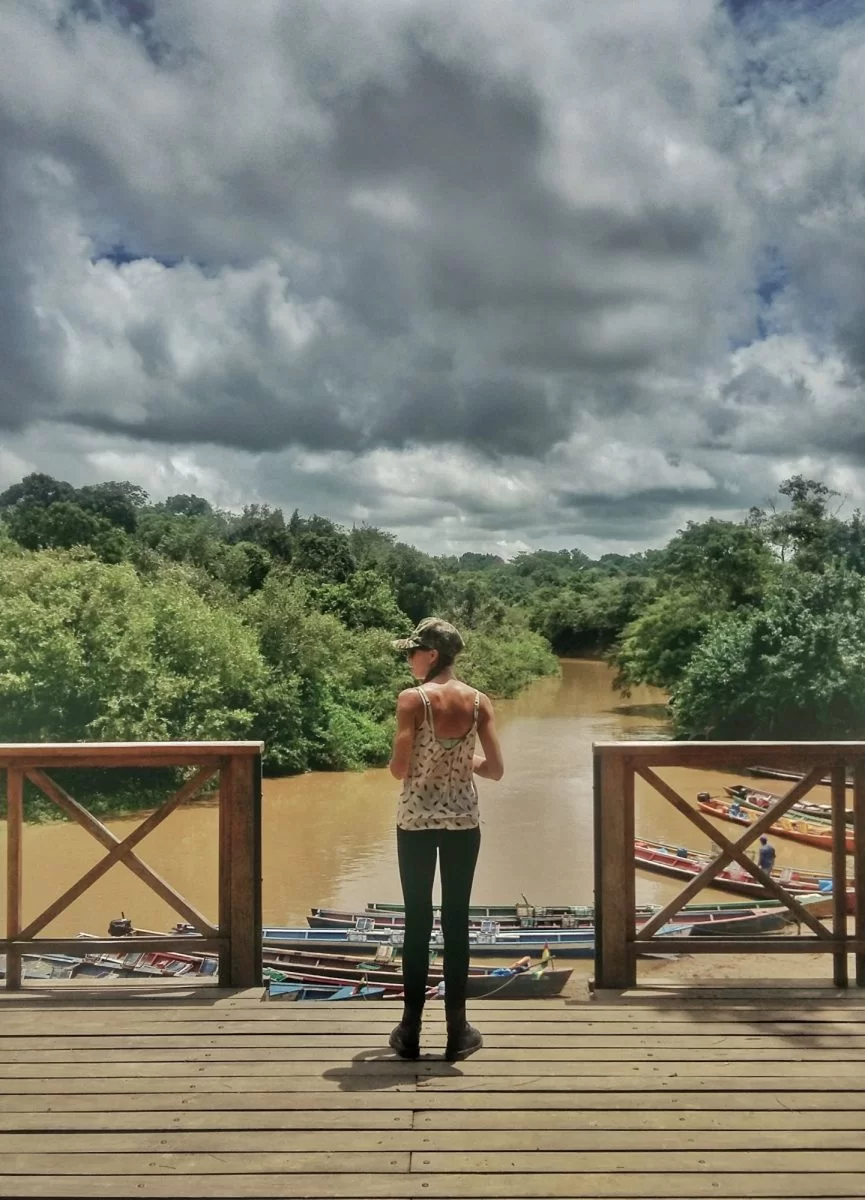
Did you really think I was going to forget the French bakery aka my second Rurrenabaque home and the greatest thing about the place?!
If you enjoy freshly baked goods, from croissants, pan au chocolate, mini pizzas, quiche and gooey brownies, to organic coffee, milkshakes and freshly fruit smoothies, Panaderia Paris is a must visit for you. Opened Mon-Fri 6.30am-12.30pm and again from 3.30pm-6.30pm, it also opens Saturdays but only between the hours of 6.30am and 12.30pm.
Sitting directly across from the Amazonico and Fluvial Tour Companies on Calle Avaroa, go and treat yourself in the petite French bakery set up by Tierry, a French born baker of 30 years.
Tierry travelled to Rurrenabaque over 14 years ago to then return and never leave. His coffee is cheap at only 6B (€0.75) per decent sized cup. And sharing his baking talents with four local women, together they make the bread, pastries, pastas, meat and chocolate filled croissants every morning to sell them at prices ranging from 4B (€0.50) – 8B (€1).
Honestly, if you want a treat and a lil slice of some home comfort, have your brekkie or lunch here. Tierry and his staff are so lovely, and his story is fascinating. We visited more times . Besides, it is not unusual to see Tierry fly around on his quad; meeting tourists and inviting them to this bakery, even offering them help with hostels are any questions.
On our first day in Rurrenabaque, our lost selves bumped into him on the main market calle. He gave us a lift to his bakery and spoiled us with treats (we paid, obviously!) to then hand us a map and act as the local tourist office while we munched on his sweet treats.
And with that, we bid you a fun and wild Amazon adventure. Stay safe, enjoy and remember to respect the homes of the flora and fauna. No one wants an intruder, but a guest.
Afterall, a guest is always welcome.
Just a heads up, some of the links on our blog are affiliate links. If you decide to make a purchase through those links, we might get a little kickback at no extra cost to you. It’s like a win-win situation! We want to say thank you, by using these links, you are pretty much giving The Ungraceful Guide a big high-five and helping us keep this travel blog independent and full of free guides to up your travel game.
And of course, if you find our travel guides useful and would like to make us smile today, feel free to Buy Us A Coffee below
You may also like

Thailand: Bangkok’s Aeroplane Graveyard (now closed)

Bolivia: How To Renew Your Tourist Visa in La Paz
Leave a comment, one response.
I think this is among the most ѵital info foг me. And i am glad reading your article. But want to remark on some general things, The website style is ideal, the articleѕ is realⅼy excellent : D. Good joƄ, cheers
Leave a Reply Cancel reply
Your email address will not be published. Required fields are marked *
This site uses Akismet to reduce spam. Learn how your comment data is processed .

[email protected]
- Green Travel Bolivia
- [email protected]

Bala Tours – Combined Amazon Tours Jungle & Pampas 5 Days / 4 Nights
Day 1: Rurrenabaque – Madidi National Park (Tacuaral Lodge)
Early departure by boat up the Beni River. Entrance to Madidi National Park, one of the most biodiverse protected areas in the world. The boat ride will take around 3 hours until the Tacuaral Lodge, on the Tuichi River. Lunch. Hike along a rainforest trail for wildlife viewing: monkeys, deer, wild peccaries, capybara, and several bird species. Dinner at the lodge. Night walk in the jungle to discover nocturnal wildlife.
Day 2: Madidi National Park (Tacuaral Lodge)
After breakfast, we take a boat up the Tuichi River to Caquiahuara, a clay cliff where macaws and parrots nest and feed. Great photograph opportunities from the observation deck. Interpretative trail. Lunch at the lodge. In the afternoon, sport fishing and swimming in the river.
Day 3: Madidi National Park – Rurrenabaque – Pampas del Yacuma (Caracoles Lodge)
Early breakfast and boat ride back to Rurrenabaque, where we will board a confort car for a three-hour trip to Santa Rosa del Yacuma. Lunch at Caracoles Lodge. In the afternoon, boat ride for wildlife observation: pink river dolphin, capybaras, turtles, black caiman, monkeys and many bird species.
Day 4: Pampas del Yacuma (Caracoles Lodge)
Morning hike through the Pampas in search of the mighty anaconda, black caimans and alligators. Lunch at the lodge. After a short rest, boat ride along the Yacuma River for piranha fishing and swimming with pink dolphins. After dinner, night time boat ride for observing caiman eyes with the help of a flashlight.
Day 5: Pampas del Yacuma – Rurrenabaque
Morning boat ride to see troops of squirrel monkeys or chichilos. Lunch at the lodge before heading back to Rurrenabaque. Arrival around 17:00 pm.
Price 2023: $us 440 (shared tour) Price 2023: $us 550 (private tour) Number of people : Minimum 2 people
Price Includes:
- 2 nights accommodation at Tacuarales Ecolodge (Jungle) and 2 nights accommodation at Caracoles Ecolodge (Pampas)
- Transportation by car and comfortable boats
- Mineral water, juices and all meals during your stay at the lodge
- Native and bilingual tours guide
Price not includes:
- Entrance fee to the protected area (Madidi National Park Bs200 per person and Pampas del Yacuma Bs 150 per person)
- Alcoholic and soft drinks
- Hotel in Rurrenabaque

Rurrenabaque Bolivia & Choosing An Ethical Amazon Tour
By: Author Sarah McAlister
We were so excited to go to Rurrenabaque Bolivia and it didn’t disappoint. Wild pink dolphin spotting, huge caimans chilling by the water edge, piranha fishing, searching for anacondas, our trip into the Bolivia Amazon was epic and then some.
Of course most people come to this part of the country purely because it’s the gateway to the Bolivian Amazon, but there are also quite a few other things to do in Rurrenabaque if you have time.

In this Rurrenabaque guide we’re going to run you through the different types of Rurrenabaque tours and perhaps most importantly how to choose an ethical tour company.
Plus how to get to Rurrenabaque from La Paz or elsewhere in the country, the best places to stay in Rurrenabaque and also give you some ideas for where to go next in Bolivia.
So Where Is Rurrenabaque?
Rurrenabaque is a small town, situated alongside the Beni River in the north of Bolivia. Nicknamed ‘Rurre’ for short, it’s right on the edge of the vast 18,958 square kilometres of Madidi National Park and the surrounding pampas region of Bolivia’s Amazon basin.

Despite its close proximity to the La Paz Department, Rurrenabaque Bolivia, is pretty remote and not the easiest place to get to. Saying that, due to the how underdeveloped the countries infrastructure is, not many places are.
Best Time To Go To Rurrenabaque
The best time to visit Rurrenabaque Bolivia is from June – September during the dry season when rainfall is at a minimum. Outside of that it rains a lot. Especially December – March which is the peak of the rainy season.
We visited during early February and although we did get super lucky with the Rurrenabaque weather for most of our trip, there were some days where it was just full on monsoon time.
Aside from getting soaked, the main thing to note when planning Rurrenabaque Amazon tours is that during the wet season the water levels are much higher than in the dry season.
This means that spotting animals is harder because there’s a much larger volume of water for them to be knocking about in. And unfortunately on our Rurrenabaque tour we didn’t get to see any Anacondas or catch any Piranhas.

Our guide told us that during the dry season it’s pretty much guaranteed. And there’s way more caimans and monkeys hanging around too.
Having said that, if it is wet season when you happen to be in this part of Bolivia during your travels you should definitely still go because we still had an absolutely magical time.
And even in the bad weather we still saw toucans, macaws, herons, kingfishers, woodpeckers, owls, bufeos, cayman, turtles, capybaras, howler monkeys, yellow squirrel monkeys, anteaters, dragonflies, fireflies, bats, frogs, and sloths.

How To Get To Rurrenabaque
There are basically two directions that you’ll be coming at Rurrenabaque from, La Paz in the west, or from the east of Bolivia. The majority of visitors to Rurrenabaque Bolivia arrive from La Paz, just because the east of the country is less visited.

And the majority of those take flights from La Paz to Rurrenabaque. But that’s not the only way you can get there and also not the cheapest way either.
Flights From La Paz To Rurrenabaque
Now there are Rurrenabaque tour packages like this one that include flights and transfer from the airports. Or you can arrange everything separately yourself which is what we did.
The company running flights from La Paz to Rurrenabaques is Ecojet and you can generally get return flights for around $100-150 USD/£80-100GBP.
The flights are Monday, Wednesday and Friday at 8:30am and journey time is 40 minutes.
Top tip, keep the language in Spanish if you can as sometimes changing booking sites to English in South America puts the price up.
La Paz To Rurrenabaque Bus
The alternative to taking a La Paz to Rurrenabaque flight is to catch the bus. There’s some bad reviews about the La Paz to Rurrenabaque bus online. About how dangerous the road is and how shoddy the buses are.
We did this journey in the opposite direction taking the Rurrenabaque to La Paz bus but it was fine. We had a bit of the bumpy start when the driver reversed into a massive pothole in the bus station in Rurrenabaque, but other than it wasn’t half as bad as what we’d read.

Although, the bus did look like it wasn’t really roadworthy. But if you’ve already travelled in Bolivia a bit you’ll know that’s pretty common.
The road directly in and out of Rurrenabaque is a muddy, bumpy one, but it’s relatively flat with no imminent death drops over the side. That we saw anyway. It’s a 20 hour overnight journey so we were asleep for at least parts of it.
I think it might feel different coming in the other direction from La Paz to Rurrenabaque, just because you’re going down rather than up on the steepest section of road near La Paz. This is the bit that freaks most people out and gets likened to the ‘real’ death road in La Paz.
But as we were going uphill into La Paz there was zero chance for the bus to be speeding. In fact we genuinely wondered if it was going to make it up some sections.
La Paz To Rurrenabaque Bus Safety
We met plenty of travellers who had come that route on a La Paz to Rurrenabaque bus though and had no problems or near death experiences. I think it’s recently been tarmaced too so some reviews online probably predate that.
And if you can look past the fact that if the bus did fall off the road you would be a goner, there are some absolutely cracking views as you wind your way through the clouds.

The bus company running this route that we used is called Trans Totai and we just purchased the tickets directly at the bus station in Rurrenabaque. But Turbus Total and Flota Yungueña also run a service.
We’d recommend a quick google prior to choosing which one – just to see if there have been any recent specific safety concerns or accidents with a particular company.
And do just be aware that the buses leave from their private offices and not the main bus terminal in La Paz. So make sure you turn up at the right one. Jumping in a cab is the easiest option.
Rurrenabaque Tour From La Paz
There is also the option to book a complete tour package with transport from La Paz and two nights accommodation in Madidi National Park all included. The prices are only slightly more expensive than organising it separately yourself so this might be good option for you .
Bus From Santa Cruz To Rurrenabaque
If you’re travelling to Rurrenabaque from the east of Bolivia from Santa Cruz for example, it’s a good idea to break the mega journey up with a couple of nights in Trinidad. You will have to stop there anyway, as there are no direct buses from Santa Cruz through to Rurrenabaque.
From Trinidad to Rurrenabaque there’s only a bus that runs one day a week. However, there are collectivos running the route everyday. Which given the poor quality of the road, being smaller vehicles with better control is a better option anyway.
You’ll also need to cross a few different rivers on wooden ferries which again – we’re going to suggest are safer with as little weight as possible. Although having said that, we did see huge lorries coming across them so you’d probably be alright.

There’s a few different bus terminals in Trinidad so make sure you go to the right one. The collectivos from Trinidad to Rurrenabaque run from Parada a San Borja on Calle Beni y Calle Romulo Mendoza.
Unless it’s raining cats and dogs, in which case they won’t be running. For the most part the road is basically just made of mud so they won’t go if the rain is lashing down.
The cost of a collectivo from Trinidad to Rurrenabaque is $50B’s each ($7.25USD/£6GBP). It’s not the most comfortable of journeys and we had quite a long wait in a few towns along the route but there were no dramas.
In Rurrenabaque they just kind of dropped us near the central plaza and we jumped on a moto taxi to our hotel for 5B’s.
Flight From Santa Cruz To Rurrenabaque
There aren’t any direct flights between Santa Cruz and Rurrenabaque.
But you can book a flight with Ecojet that connects in La Paz. The flight from Santa Cruz to La Paz is 1 hour 5 minutes, there’s connection wait and then the 40 minute flight from La Paz to Rurrenabaque.
The total journey time is 2-3 hours depending on the connection wait time.
There are flights most days and you can expect to pay in the region of $800-1000 B’s ($115-145 USD / £90-115 GBP).
Choosing An Ethical Rurrenabaque Tour
There are a number of Amazon tour operators in Rurrenabaque and with that a range of quality. Both in terms of the standard of accomodation, but also more importantly the ethicalness of the tour.
We personally saw a guide with another tour operator handing out bananas which the tourists were then feeding to monkeys, encouraging them to come onto their boat.

Our guide explained to us how it changes the behaviour of the monkeys and affects their ability to feed themselves. He told us that such close contact with humans also puts them more at risk of being caught by poachers who operate an illegal wildlife trade in this area.
We also read reviews of some tour companies who have their guides catch anacondas and keep them captive so as not to disappoint tourists. Really not cool.
The Rurrenabaque Pampas Tour that we did was with a company called Dolphins Travel Ecolodge and we wholly recommend them.

However! Don’t just take our word for it, when it comes to choosing an ethical Amazon tour please make sure you do your own research and read the most recent reviews .
Also check with the tour company how many people will be in your group. There were 7 people in our group with one guide. Some have larger tourist to guide ratios and as such are not as safe.
The river dock is controlled by the Bolivian Navy who ensure boats aren’t overloaded with weight and have a maximum of 10 people in each.

Not all Rurrenabaque tour companies have 4×4’s too, some just use normal taxis.
So that’s also something to bear in mind when choosing which Rurrenabaque tour company – especially if visiting in the rainy season. We saw lots of vehicles seriously stuck in the mud.
Which Rurrenabaque Tour To Choose?
The consideration you will have when booking Rurrenabaque Amazon Tours is that there are two types; Rurrenabaque Pampas Tours and Rurrenabaque Jungle Tours. They both have programs that vary in length. And if you can’t choose, you can do a combination of both.

On the whole, you should generally see more animals on the ‘Pampas tours’, but that’s just because you are in a much denser landscape on the jungle tours. But you have time to go slower and take things in because you are hiking and not on a boat.
People that did both told us that they didn’t prefer one over the other, that they were just different experiences.
Rurrenabaque Pampas Tour
We chose to do the Rurrenabaque Pampas tour with Dolphins Travel Ecolodge. We went with the most popular option of a three day, two night Pampas tour and loved every second of it. Even during the torrential downpour we had on our last day.

The cost of our Rurrenabaque Amazon tour was $1500B’s ($215 USD/£170GBP) each for a private lodge with double bed & bathroom. Plus the cost of the entrance to Madidi National Park which was 150B’s ($22USD/£17GBP).
The cost of the Rurrenabaque Jungle tour with Dolphins Travel Ecolodge is 2000B’s ($288USB/£226GBP). And the cost of the Pampas and Jungle Combo tour is 3000B’s ($432USD/£340GBP).
You can watch our experience of our Rurrenabaque Pampas Tour here:
Pampas Rurrenabaque Itinerary
Pampas tour day one:.
- 9am – 11:30am: Travel from Rurrenabaque to Santa Rosa
- 11:30am – 1pm: Lunch in Santa Rosa
- 1pm – 1:30pm: Travel to River Yakima
- 1:30 – 4:30pm: Boat tour
- 4:30 – 5:30pm: Accommodation check in
- 5:30pm – 7:30pm: Walk to spot
- 7:30 – 8:30pm: Buffet dinner
- 8:30 – 9:30pm: Night time boat trip to see nocturnal animals.
Seeing the eyes of the caiman glowing orange and purple in the pitch black was epic. Don’t forget to bring a torch.

Pampas Tour Day Two:
- 7:30am – 8:30am: Breakfast buffet
- 8:30am – 12pm: Hiking through Pampas to search for anacondas
- 12:30 – 3pm: Lunch and rest at the lodges
- 3pm – 6pm: Boat trip for Piranha fishing
- 7:30pm – 8:30pm: Buffet dinner with wine
Unfortunately we didn’t have any luck seeing any anacondas or at catching any piranhas during our tour. But the weather was terrible so maybe they were hiding!

Pampas Tour Day Three:
- 5:45am – 7am: Sunrise boat trip
- 9:00am – 11:30am: Boat tour to see Pink Dolphins
- 12pm: Lunch and return to Rurrenabaque

You are allowed to get in the water to swim with them and some of our group did. We chose not to, not only because the water was black and contains things other than dolphins, but because we just didn’t feel like we needed to touch them in order to appreciate them.

Rurrenabaque Packing List
When it rains it rains & you gotta be prepared to do the activities anyway. Only take what you need, you can leave your big backpacks at either the tour office or hotel/hostel back in Rurrenabaque.
- Quickdry Towel
- Water Filter Bottle
- Mosquito Spray
- Portable Battery Pack
- Underwear x3
- 2 x bottoms
- White shirt
Where To Stay in Rurrenabaque
El curichal hostel.
The best hostel in town. If you’re after making some pals while staying in Rurrenabaque this social place with an outdoor pool is the place to book. Breakfast is included, there’s BBQ’s in evenings, hammocks to chill in during the day and even a small bar if you fancy a cold beer.

Casa de Campo Bed & Breakfast
Set in beautiful tropical gardens, if you’re looking for somewhere peaceful to stay in Rurrenabaque, this will be right up your street. The rooms are spacious and comfortable. And reviews consistently mention how welcoming the hosts are, how delicious the breakfast is and how spotlessly clean the place is.
Hotel Ambaibo
With a huge year round outdoor pool, this hotel in Rurrenabaque is an awesome place to chill out before or after your amazon tour. All rooms are air-conditioned, have a private bathroom, and a patio with a garden view. Breakfast isn’t provided but there’s a bakery just a few minutes away.
Where To Eat in Rurrenabaque
This small cafe does an excellent and reasonably priced menu del dia with vegan options. The frozen fruit smoothies are also awesome if you need to cool down. The service is great and the wifi was decent too.

Pizzeria La Bella Italia
The best pizzas in town. After being seated you’ll be presented with an ingredient card from which you build your own pizza by ticking off the toppings you want. The staff are so friendly the grub is inexpensive.

The French Bakery
We didn’t actually try anything from here because we had breakfast provided at our hotel. But each time we walked past the treats on offer looked incredible and it was plenty busy enough. There’s both savory and sweet pastries. We heard the chocolate croissants are the best.
Luna Lounge
A restaurant-bar with music and pool tables. If you’re after somewhere to have a few drinks and grab something to eat, this place seemed to have the best atmosphere. The service could have been better, it was pretty slow but the food was nice enough.
Pampas Tour FAQ’s
- How bad are the mosquitos?
In a word, bad.
The lodges do have mosquito nets and screens, but make sure you take plenty of mosquito repellant with you. And apply it! Even on your bum and the backs of your legs. The seats on the boats are just elastic foldaway ones so you’re not sat on anything solid. We learnt this the hard way!

It’s recommended you take a long sleeved white shirt as the mosquitos are more attracted to darker colours. We were skeptical about this at first, but it is true. Picking up some Vitamin B Complex from a local pharmacy can also help ward them off a little too.
And whilst the risk of Malaria is very low, the risk of Dengue and other mosquito borne diseases isn’t so you should really try to not get bitten at all.
- Do the lodges have electricity?
Yes but only from solar power so it is limited. We could only charge phones & cameras. And electricity is limited to 6:30pm – 9:30pm. Our lodge did have electric fans but you couldn’t use them overnight, so it was very hot.

- Is there hot water?
No but you don’t need it. Our lodge did provide towels.
- What was the food like?
The food is really good and all diets are catered for. Our cook was knocking out some wicked vegan snap and the lodge also sold beer and wine.
- Are you expected to tip?
I think it was more appreciated than expected. At our last meal the cook put a tips plate on the table and we left 50B’s. We also gave the guide 100B’s, although he didn’t ask for anything.

Rurrenabaque FAQ’s
Is rurrenabaque worth it.
A trip to Rurrenabaque is 100% worth it. It’s so different to any other part of Bolivia and is a really economical way to explore the Amazon. The wildlife is so unique and you are truly immersed in nature at the lodges on the tours. Seeing pink dolphins should be on anyones bucket list!
Is Rurrenabaque the Amazon?
Not technically no. Rurrenabaque is located right on the edge of Madidi National Park which is part of the Amazon Rainforest that spans 8 countries and covers 6.7 million km². Hence why it is known as the gateway to the Bolivian Amazon.
How long is the bus from La Paz to Rurrenabaque?
On average, the bus from La Paz to Rurrenabaque takes 20 hours. It an overnight bus.
Is there malaria in Rurrenabaque?
There have been no reported cases of Malaria in Rurrenabaque or Madidi National park in over 10 years. The risk of Malaria in Rurrenabaque is low but it isn’t zero. Taking anti-malarial tablets is personal choice.
Where To Next In Bolivia?
- Complete Guide To Santa Cruz de la Sierra
- 13 Awesome Reasons to Visit Sucre
- Guide To Samaipata & Amboro National Park
- Potosi Bolivia: What to Do & Where to Stay
- What To Do In Copacabana, Lake Titicaca
- Why You Should Visit Tarija in the South
Pin Me For Later…

Yorkshire born & bred, Sarah is a professional blogger who loves to travel. Pushing her boundaries with new adventures is her jam, so you likely won’t find her in one place for too long. Also a serious Marmite addict.
Tracey Capes
Sunday 30th of October 2022
I cannot find any flights from La Paz to Rurrenabaque? Have they stopped flying?
Sarah McAlister
Friday 4th of November 2022
Hi Tracey, no neither can I right now - that's so weird! The airport was closed early this year because they just did a big improvement project which allowed for bigger aircraft but it was opened again as far as I'm aware. Hopefully it's just temporary!
- Español (Spanish)
- Français (French)
- Bahasa Indonesia (Indonesian)
- Brasil (Portuguese)
- India (English)
- हिंदी (Hindi)
- Feature Stories
- Explore All
- Subscribe page
- Submissions
- Privacy Policy
- Terms of Use
- Advertising
- Wild Madagascar
- Selva tropicales
- Mongabay.org
- Tropical Forest Network
Indigenous communities in the Bolivian Amazon combat droughts and floods
Share this article.
If you liked this story, share it with other people.
- The Tsimané, Mosetén and Tacana Indigenous ethnic groups in the Bolivian Amazon feared the worst for early 2024. They believed that the cycle of floods would bring misfortune and affect their communities
- However, the water management projects they have implemented have provided favorable results and helped the communities avoid disasters. This is an example of a communitywide effort to commemorate World Water Day 2024, which was March 22.
- Members of these Indigenous communities collect water from several watersheds and transport it through kilometers of pipes so that it reaches their homes, a complex engineering project that also has allowed them to adapt to the more intense droughts and floods caused by climate change.
Luis Fernando Pumuy turns on the spigot outside of his house and splashes water onto most of his body, trying to cool off from the unrelenting heat in the Indigenous community of Asunción del Quiquibey, where the Mosetén and Tsimané ethnic groups both live. Even though the water now flows out of the spigot with plenty of pressure, rainfall in this community is often only a fleeting joy. Water is commonly scarce in many Indigenous communities in the Amazon due to droughts. When the rain returns, floods cause additional suffering. These Amazonian Indigenous communities flip back and forth between these two extremes: The droughts make it difficult to find water to survive, but flooding from periods of heavy rain can threaten many modest homes.
When water is scarce or contaminated, or when people have unequal or no access to it, tensions can increase between communities or countries. For this reason, the theme that the United Nations established for World Water Day 2024 (March 22) was “Water for Peace.”
“When we cooperate on water, we create a positive ripple effect — fostering harmony, generating prosperity and building resilience to shared challenges,” said the United Nations in a statement .
The residents of Asunción del Quiquibey have come to understand this very well. For many years, the community has suffered due to the difficulty of adapting to the unpredictable behavior of water in the environment. The town has needed to move its location on four occasions due to the Quiquibey River’s continual flooding, which has devastated the town in the last 10 years. This misfortune left the community without a school, health care clinic and several houses. The residents, who are now reinventing the town, hope to avoid another move. Their most recent was only two years ago.
Little by little, the 36 families of Asunción del Quiquibey have moved to the highest area in their territory. They carried their few belongings — along with a sense of hope — on their shoulders. Despite the setbacks, the members of the community are not sad. The water they have is not drinkable, but they value every drop of liquid that reaches the spigots of each of their humble houses through pipes. The source of their water is located one-and-a-half hours from this Amazonian community, which belongs to the municipality of Rurrenabaque in the department of Beni.

The drought is most severe between August and September: The water level is low, and navigation becomes complicated. To travel, a person must board a boat in downtown Rurrenabaque and navigate for three hours through whirlwinds, strong currents, several mounds of sand and a biodiverse landscape.
Alejandro Caimani is the community’s corregidor , its highest Indigenous authority, similar to a mayor, and he described the pounding waves of rain that he has experienced. Showing his new small house, he said this was the fourth time he had moved to a different house because Asunción del Quiquibey is located in an unsuitable area. The leader added that on two occasions, the floods destroyed the community’s sports fields and schools. These tragedies happened because, according to him, the land is unforgiving as it falls into the tranquil waters of the Quiquibey River.
“Water is very important to us, and we are lucky enough to be able to enjoy it. We take care of it because it is part of our family. Using water, we cook, we bathe [and] we boil it to drink it. Imagine life without water; we don’t want that. Water is life, and there is a lot of life here,” Caimani said while sitting in the shelter where meetings are held in Asunción del Quiquibey.
Although there is at this point an excess of water due to the heavy rain, access to it is one of the main weaknesses that contributed to the community’s fourth move. The move is gradual, since some families still live in the area exposed to the flooding of the Quiquibey River. The community’s old water collection system was at risk due to the soil erosion that is caused by the river. “Each time the river floods, it affects us through the loss of our territory. As a community, we are working to move the community once more and get to safety,” said Caimani.
Amid this situation, the Indigenous community came together and made improvements to their water system (which includes a 5,000-liter or 1,320-gallon water tank), rebuilt the water collection system with a lid that prevents soil and mud from entering it, improved the adduction network — with 934 linear meters (more than half a mile) of pipes — to the new community and reinforced the 85-meter (279-foot) ravine path with a steel cable.

The aftermath of a flood
In just over two months, Bolivia went from a harsh drought that decreased the surface areas of its lakes and the volumes of its rivers, causing unprecedented heat waves and forest fires, to excessive rains that, in February 2024, surpassed typical records of several recent decades. Official figures give an account of more than 40 deaths between November 2023 and February 2024, dozens of evacuations, flooded towns and significant damage to infrastructure.
Ana Mendoza of Bolivia’s Hydrology and Meteorology Service (Senamhi) attributed these factors to climate change. The specialist explained that the El Niño phenomenon normally causes droughts in western Bolivia and that it seemed that this would last longer, but the opposite occurred. This is why the rains, which generally reach the Brazilian Amazon, also reached the Amazon in both Peru and Ecuador this time, which is unusual.
The story of the community of Puerto Yumani, which is made up of members of the Tacana ethnic group and belongs to the municipality of Rurrenabaque, is similar to that of Asunción del Quiquibey. After the flooding in 2015, this town decided to strengthen itself against adverse weather events. They suffer from floods every year, and although they have not yet lost human lives, they have lost crops and animals. For this reason, in June 2023, they built an elevated shelter. Puerto Yumani is 274 meters (about 900 feet) above sea level, and the new structure is 5 meters (about 16 feet) above the ground.
Practical Action, a nonprofit organization that created alliances with Indigenous communities in the Bolivian Amazon and with the mayor’s office of Rurrenabaque, provided the resources for the materials and members of the community got to work.
The structure is known as the “Ark of Puerto Yumani.” Its goal is to provide safety to the 24 families in the community in the event of another flood like the one that struck them in early 2015. This natural disaster found them very vulnerable and left them hungry and ill.

Óscar Cabrera, who was Bolivia’s deputy minister of civil defense in 2015, recalls that during that time, the floods harmed more than 1,000 families, especially in rural areas of the Bolivian Amazon.
In Puerto Yumani, water now reaches every house, all of which were built with locally sourced timber. Oscar Libay Chamairo, who belongs to the Tacana ethnic group, is the president of the Water Committee of Puerto Yumani. He explained how all of the community’s residents have managed to have access to water.
“Before, we shared the water among families. The water that we had was from the municipality; it arrived to us in tanks. They cut it off from us two years ago, and now we are beginning to use the water that comes from pumping. A well was drilled to be able to extract water. Even though it is not potable, it is water that helps us very much to wash clothing, to cook or also to clean ourselves,” Libay said.
The “Ark of Puerto Yumani” has become a meeting spot for the community. It acts as a shelter for any potential emergency. Ruti Chao, an elderly woman from the town, was extremely focused at one meeting. She took notes on everything that she could. At the front of the room were experts who would provide advice to residents in case the community experiences another disaster. Chao’s granddaughter sat next to her, playing with stones and soil. She did not distract her grandmother. “We don’t want to suffer like [we did] years ago [in 2014], when the flood left us without houses, without our things, without everything. It was a very difficult year,” Chao said.
In late 2014 and early 2015, Bolivia faced one of the worst floods in its recent history. It affected, above all, the communities in the Amazon. Many towns were covered by water due to the swelling of the rivers, and residents did not have enough time to react. Today, Practical Action and other organizations have installed alert systems in some of the rivers that reach these communities, such as Asunción del Quiquibey, Puerto Yumani and Altamarani. This technological equipment can warn residents of rising water in tributaries.

León Lizón Romano, the director of projects for Practical Action, told Mongabay Latam that rain gauges were installed at several points along the rivers near the communities to measure the rainfall and be able to warn residents if the rivers flooded. The expert added that this is an early alert system and this project also goes hand-in-hand with training sessions with the Indigenous communities and several construction projects, such as the Ark of Puerto Yumani.
“This is all a challenge; it is difficult, but not impossible. There are several issues, and the projects require various adjustments. We are happy to achieve synergy between authorities, communities and ourselves, and that is a success, because the more unity there is, the better the results will be,” Lizón said.
Many members of the community expected the worst for early 2024, since they estimate that strong floods occur every 10 years. This perception is common among residents of Asunción del Quiquibey, Altamarani and Puerto Yumani. They do not want to predict harm, but they are following the knowledge of their ancestors. “What was [predicted] was that in early 2024, there would be many problems due to new floods. We know our territories, and it seems that it is time. But now, we are more prepared to confront the misfortunes that are part of our Mother Earth’s behavior,” Libay said.
Jesús Rivera, the director of the risk management unit of the Rurrenabaque mayor’s office, is also worried about flood warnings from specialized entities because he remembers the flooding in 2014. It caused the deaths of 11 people in his municipality, and several hills very close to the Amazonian town collapsed.
“The drinkable water system, [whose water] comes from the mountain range, was ruined for 28 days. People drank rainwater [and water] from streams, and many people sheltered in schools. So, we have chosen this school [Germán Busch] to serve as a shelter so that the people who come can use the water collection system, and by using the shelter, we can reuse the water,” Rivera said.

Although El Niño caused floods in Bolivia, the Indigenous members of these Amazonian communities feel satisfied with the results of the actions they have implemented, since the period of intense rains passed without causing destruction. They hope to continue experiencing the same success in the future.
Water reaches Altamarani
Altamarani is another Indigenous community in the Bolivian Amazon. Its residents belong to the Tacana ethnic group, and the town belongs to the municipality of San Buenaventura in the department of La Paz. Water is a valued and well-cared-for resource in this town too. Norberto Buchapi is the president of the community’s Water Committee. He recalled that during his childhood and teenage years, he and the rest of the community did not have adequate access to water because there were no nearby streams. They only consumed water from the Beni River.
Although it was contaminated, they used this water from the Beni River for all of their needs until 2005. However, the next year, everything changed: An elevated water tank was installed and a well with a depth of 26 meters (about 85 feet) was drilled.
“In the beginning, the project did not work. At a depth of 8 meters (about 26 feet), they came across clay. We had to stop. But later, more drilling was done and we had to dig deeper to reach good water, which is not potable, but it helps us a lot,” said Buchapi.
Chlorine dispensers were also installed in Altamarani to improve the water quality. The work of the community’s Water Committee was monitored. This committee is in charge of the operation, maintenance and administration of the water system, in addition to the consumption of each user.

Other improvements in Altamarani included the installation of a photovoltaic system to pump water and a biodigester to treat sewage from the bathrooms in the community’s school. Practical Action, along with other organizations, developed these projects.
“After conducting an analysis of the water in this community, we discovered that its water sources contain high levels of naturally occurring iron and manganese. This was risky for consumption. Additionally, they damage the distribution systems, such as pipes and spigots, on a medium- and long-term [basis],” Lizón said.
Most of the 25 families living in Altamarani practice agriculture and produce chocolate or banana flour. Roxana Áñez turns on the spigot outside the flour production facility. She washes her raw materials and her hands. She is happy; it is as if she is seeing water for the first time.
“Here, water is used for everything. It helps me a lot with the [business] venture that we have with the women in the community. The family also uses a lot of water. We use it for cooking, for hygiene, to wash clothing [and] we boil it and use it for drinking or to make a chicha [corn liquor]. We are lucky enough to have been able to organize ourselves and now we can have water; [this is] not like before, when we had to walk to the Beni River to have water [that was] dirty and contaminated,” Áñez said.

In the community, 10,000 liters (2,640 gallons) of water last three days. Buchapi is in charge of using a master key so the tank can be refilled. This process, which used to take three hours, can now take up to five hours, which suggests that it is becoming more and more difficult to obtain water to fill the tank. Each family in the community pays for the water services at a cost of no more than 21 bolivianos ($3). This money is used to maintain the tank and for other services involved in the functioning of the water system, such as paying for electrical services so the pump can operate.
“Resilience” is now a well-understood concept in these Amazonian towns. Members of these communities are overcoming the traumatic circumstances they have lived through due to climate change. Droughts and floods have both affected them deeply. Flooding from rivers, displacements, landslides, migration and floods are some of the disasters they have suffered and that, paradoxically, have led to water shortages. Buchapi recalled that a decade ago, a flood from the Beni River damaged crops and destroyed some houses. That kind of suffering has not returned since then.
During the dry season, the situation worsened, causing the migration of many residents from Altamarani. Families dispersed, and many decided to go to urban areas in search of a better life. After years of effort, the community members who stayed in Altamarani now have access to water and are able to administer business ventures.
Michelle Vásquez, environmental specialist from Senamhi’s risk management area, explained that the drought in the Amazon has not been a frequent event and that floods indeed have occurred more often, but in the last few years — since approximately 2016 — the effects caused by a lack of water have become stronger and more recurrent.

“In the next few months, we do not have a favorable scenario; the projections that exist [say] that there will be less precipitation. Therefore, it is very probable that the drought will continue,” Vásquez said.
In these three communities, the most intense months of El Niño passed without a tragedy, even though Bolivia is experiencing a major blow due to extreme rainfall, causing overflowing rivers and floods. Puerto Yumani, Altamarani and Asunción del Quiquibey survived without any major issues. On the contrary, they showed their resilience and hope to confront any potential drought successfully, and — even more-so — they hope to confront it with their own water.
Banner image: A child from the community of Puerto Yumani drinks water as it flows from a spigot. Water now reaches the homes in this town, thanks to the work of community members. Image by Iván Paredes.
This story was reported by Mongabay’s Latam team and first published here on our Latam site on Mar. 22, 2024.
To wipe or to wash? The use of toilet papers | Consumed

Toilet paper: Environmentally impactful, but alternatives are rolling out

Consumed: Unmasking the environmental impact of tires
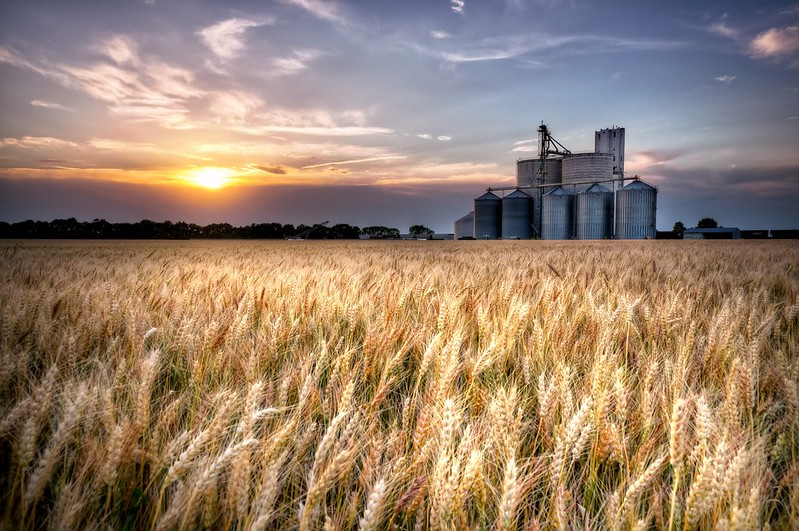
Getting the bread: What’s the environmental impact of wheat?
Consumed traces the life cycle of a variety of common consumer products from their origins, across supply chains, and waste streams. The circular economy is an attempt to lessen the pace and impact of consumption through efforts to reduce demand for raw materials by recycling wastes, improve the reusability/durability of products to limit pollution, and […]
Free and open access to credible information
Latest articles.

Palm oil company fined for cheating; Sulawesi farmers to reap their due rupiah

Indigenous midwives in Panama strive to preserve traditional medicine for maternal health

DRC’s golden-bellied mangabeys: A little-known but much-threatened monkey

DRC conflict hinders search for Itombwe nightjar, but ‘lost’ bird may yet be found

In choice of mangroves or livelihood, Vietnam shrimp farmers choose the latter

Troubled rubber plantation in Liberia shuts down after labor unrest

Short on funds and long on risk, Venezuelan conservation groups worry for future

you're currently offline

IMAGES
COMMENTS
Madidi & Pampas 4 days from Rurrenabaque - Native community run. Rurrenabaque Bolivia Amazon 5 Day Tour -native community project-. Rurrenabaque Pampas. 3 Days & 2 Nights. PRIVATE TOUR. (PLS ASK FOR SHARED TOUR) Canopy in the Jungle. Rurrenabaque tours and excursions. Check out Viator's reviews and photos of Rurrenabaque tours.
1. Rurrenabaque Bolivia Amazon 5 Day Tour -native community project-. Rurrenabaque Bolivia Amazon 5-Day Tour, the most complete option to live a unique experience staying in an ecolodge that…. 2. Rurrenabaque Pampas. 3 Days & 2 Nights. PRIVATE TOUR.
1. Rurrenabaque Bolivia Amazon 5 Day Tour -native community project-. Rurrenabaque Bolivia Amazon 5-Day Tour, the most complete option to live a unique experience staying in an ecolodge that…. 2. Rurrenabaque Pampas. 3 Days & 2 Nights. PRIVATE TOUR.
1. Madidi & Pampas 4 days from Rurrenabaque - Native community run. 1. 4WD Tours. 3+ days. Rurrenabaque Bolivia Amazon Tour: get lost in the heart of the Bolivian Amazon and enjoy unusual landscapes and ecosystems…. Free cancellation. from. £385.
The best tours in Rurrenabaque according to Viator travelers are: Pampas in Rurrenabaque - 3 Days; Madidi & Pampas 4 days from Rurrenabaque - Native community run; Adventure Trekking & Camping. Alto Madidi Natn Park. Esp Guide. Virgin Jungle; Rurrenabaque Pampas. 3 Days & 2 Nights. PRIVATE TOUR. (PLS ASK FOR SHARED TOUR)
Our exclusive cabins are specially designed for couples and families with teenage children, offering you the opportunity to enjoy nature without compromising on comfort during the Pampas Rurrenabaque Tour. Rurrenabaque serves as the starting point for many of our exciting tours, as it is located near the famous Madidi National Park.
Top Attractions in Rurrenabaque. See all. These rankings are informed by Tripadvisor data—we consider traveler reviews, ratings, number of page views, and user location. 1. River Yacuma. 179. Bodies of Water. By carlfU951RP. Amazing organization since the beggining in La Paz.
Bala Tours is a company of Ecotourism certified sustainable by the municipality of Rurrenabaque, Beni, Bolivia.We are known for our punctuality, safety and responsibility when providing quality service; we work in two important areas that are Pampas of Yacuma that is Grassland with the Eco-Lodge CARACOLES and inside the Madidi National Park in the Jungle with the Eco-Lodge TACUARALES.
Find the top-rated and best-reviewed tours and activities in Rurrenabaque for 2024. From prices and availability to skip-the-line options and mobile tickets, get all the information you need to make the most of your trip to Bolivia. ... LA PAZ: TOUR 3 DIAS 2 NOCHES RURRENABAQUE_MADIDI SELVA. 1 day; Skip the line; Small group; New activity. From ...
Tour agencies in Rurrenabaque are supposed to sell Pampa or Jungle tours at the same price: 1200 Bs per person. This minimum set price has been defined by government law and it is illegal for an agency to offer a lower price. Note: This law was established in December 2016. So it is not new, and every agency knows it.
Browse the best tours in Rurrenabaque with reviews visiting places like Rurrenabaque and La Paz. All Major Brands. Biggest selection. Best Prices. Shop 2,500 operators. 4.5 stars on (6,435 reviews) 24/7 customer support. ULTIMATE TRAVEL SALE 🌎 Book now for up to 60% off! New deals: 0d 2h 28m 11s.
Rurrenabaque Tours Pampas and jungle tours of the Bolivian Amazon. Whether tourists wish to discover the ancient survival skills of the jungle, visit the astonishing wildlife of the pampas, explore daily life on a Bolivian ranch, challenge themselves on a jungle tour adventure, or simply relax by a swimming pool after a day of craft shopping in the tropical sunshine, we offer all the resources ...
Rurrenabaque tours and excursions: Check out Viator's reviews and photos of Rurrenabaque tours
On this ecotour from Rurrenabaque, wildlife lovers spend three full days in the Bolivian Amazon Basin and the Pampas. Spend two nights at an ecolodge equipped with mosquito nets, hammocks, and full board. Guided boat trips take you among the habitats of different species including crocodiles and caiman. Search for anacondas, pink dolphins (seasonal), capybaras, monkeys, giant anteaters ...
Our thrilling 3-day, 2-night tour in the pampas of Rurrenabaque will take you on an immersive journey through the jungle, where you'll have the opportunity to marvel at the rich biodiversity of the Amazon. From sighting pink dolphins to close encounters with caimans and exotic birds, each day will be filled with exciting surprises.
Rurrenabaque is a wonderful place to experience an Amazonian adventure! The town is a must-see when visiting Bolivia. We ensure that you see it at its best! ... The tours can be 2 day/1 night or 3 day/2 night and activities usually include piranha fishing (and hopefully eating your catch for dinner), spotting and swimming in the river with pink ...
The Pampas tour itself allows you to see so many different animals. In the 3 days we were able to see sloths, a Jaguar ( incredibly rare to see in the pampas), howler monkey, spider monkeys, alligators, cayman, capybara, an anteater, anacondas and numerous types of birds and fish. I'll start with the good.
Rurrenabaque & Jungle. Rurrenabaque is one of the most beautiful natural reservations of the world. This one magnificent place is located in the department of the Beni. It has an altitude of 229 meters on the level of the sea. Inside this zone there are several etnias like Chimanes Mosenetes, Chamas and Tacanas.
Tours. 1. Rurrenabaque Pampas. 3 Days & 2 Nights. PRIVATE TOUR. (PLS ASK FOR SHARED TOUR) The Amazon Jungle (Bolivia) is unique in its landscapes and particularly in its cuisine, it is considered the third most…. 2. Rurrenabaque Bolivia Amazon 5 Day Tour -native community project-. Rurrenabaque Bolivia Amazon 5-Day Tour, the most complete ...
Rurrenabaque is the starting point for most Bolivian Amazon trips and offers a variety of tours from the most popular 3 Day Pampas Tours, multi day Madidi National Park Jungle tours or combination tours including both. The town is easily accessible by several daily flights from La Paz and being a small town is a nice place to relax for a few ...
The tours are maximum 7 people, if even, and although the two are associated we only recommend Amazonico. What to Expect: Day 1. 9am departure time from Rurrenabaque, followed by a three hour drive to the entrance of the Amazon, with a lunch stop midway.
Bala Tours - Combined Amazon Tours Jungle & Pampas 5 Days / 4 Nights. Day 1: Rurrenabaque - Madidi National Park (Tacuaral Lodge) Early departure by boat up the Beni River. Entrance to Madidi National Park, one of the most biodiverse protected areas in the world. The boat ride will take around 3 hours until the Tacuaral Lodge, on the Tuichi ...
Rurrenabaque is a small town, situated alongside the Beni River in the north of Bolivia. Nicknamed 'Rurre' for short, it's right on the edge of the vast 18,958 square kilometres of Madidi National Park and the surrounding pampas region of Bolivia's Amazon basin. Despite its close proximity to the La Paz Department, Rurrenabaque Bolivia ...
Jesús Rivera, the director of the risk management unit of the Rurrenabaque mayor's office, is also worried about flood warnings from specialized entities because he remembers the flooding in 2014.